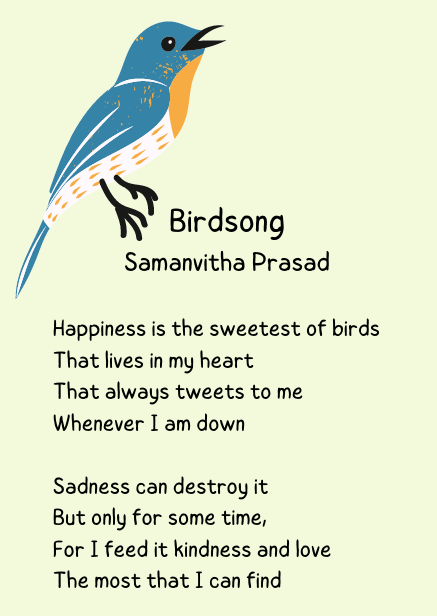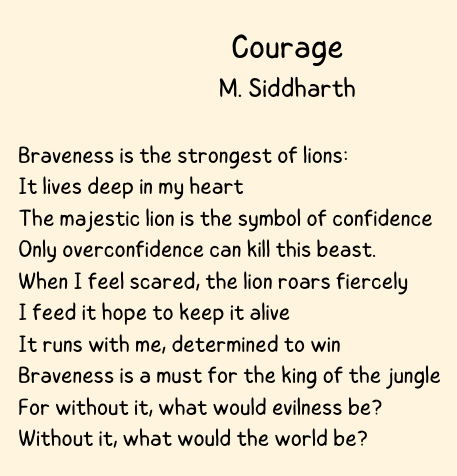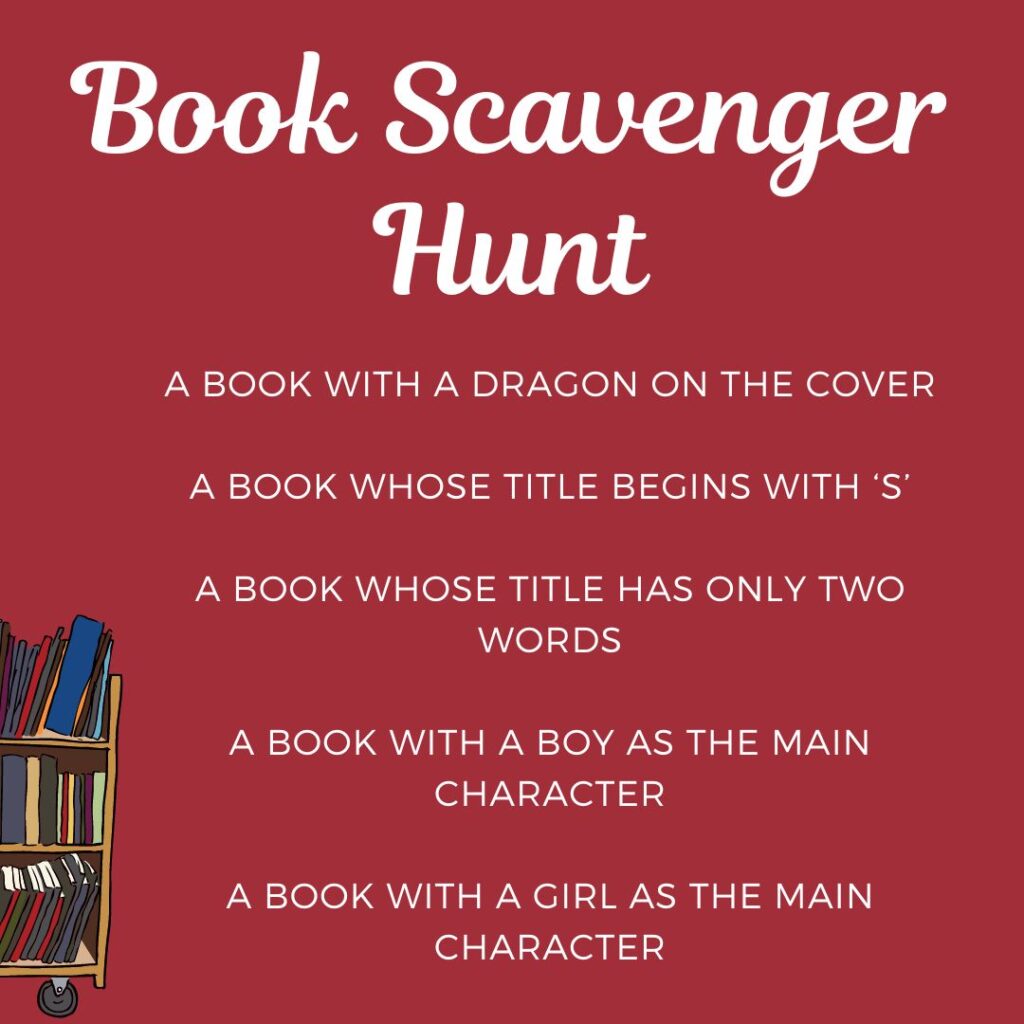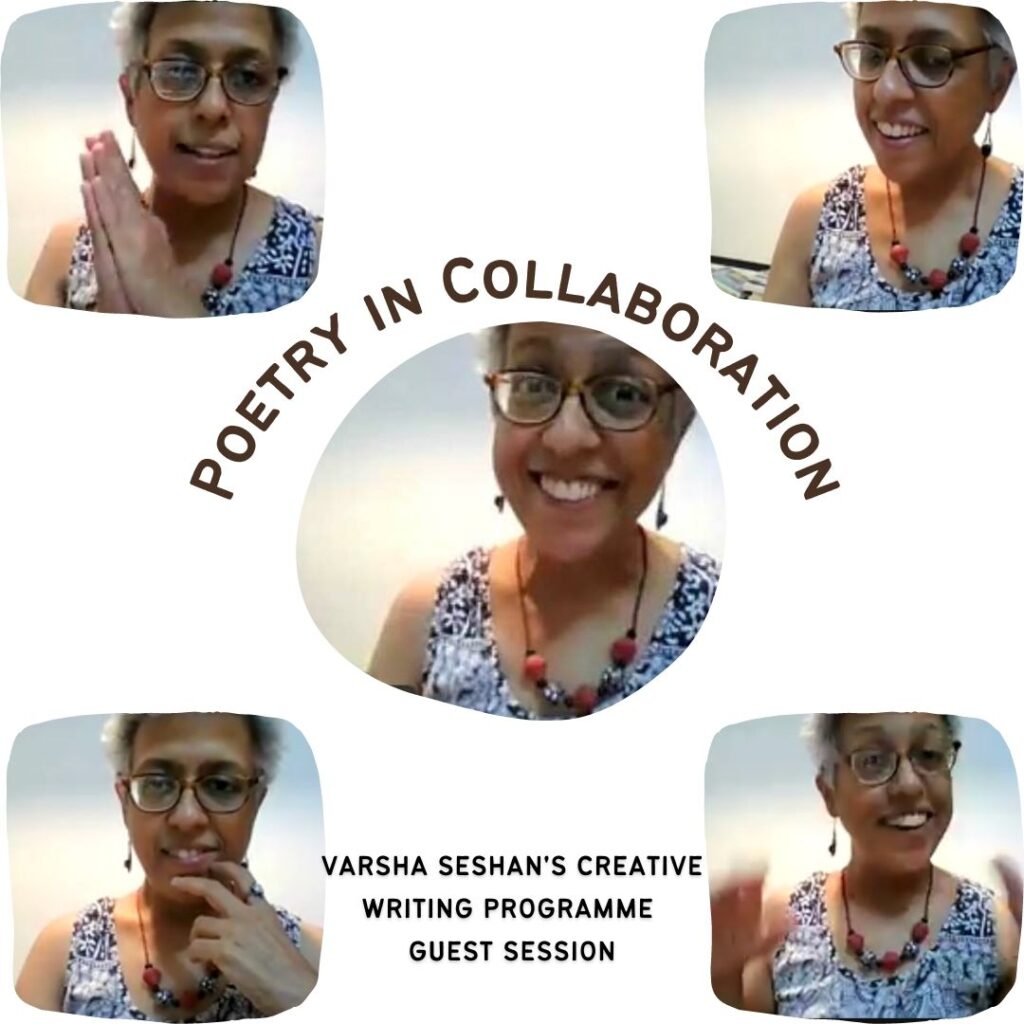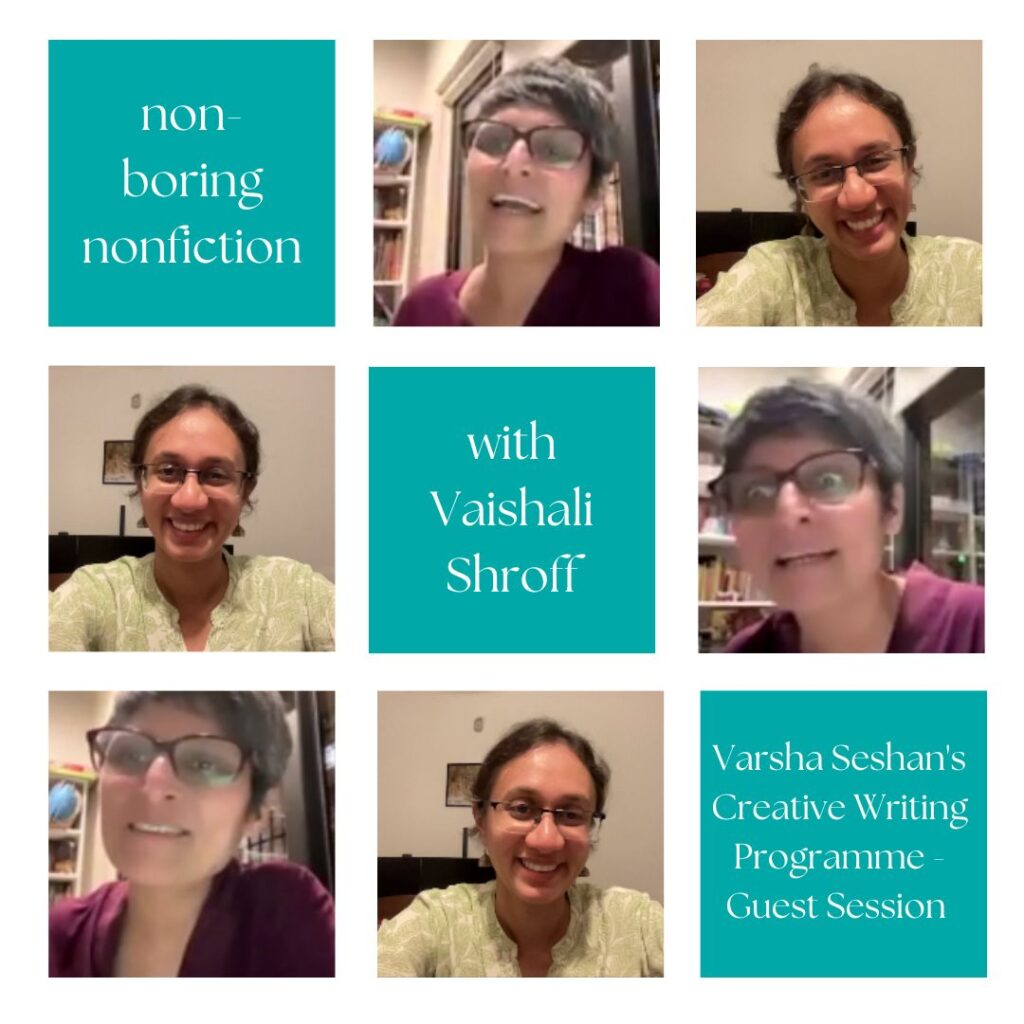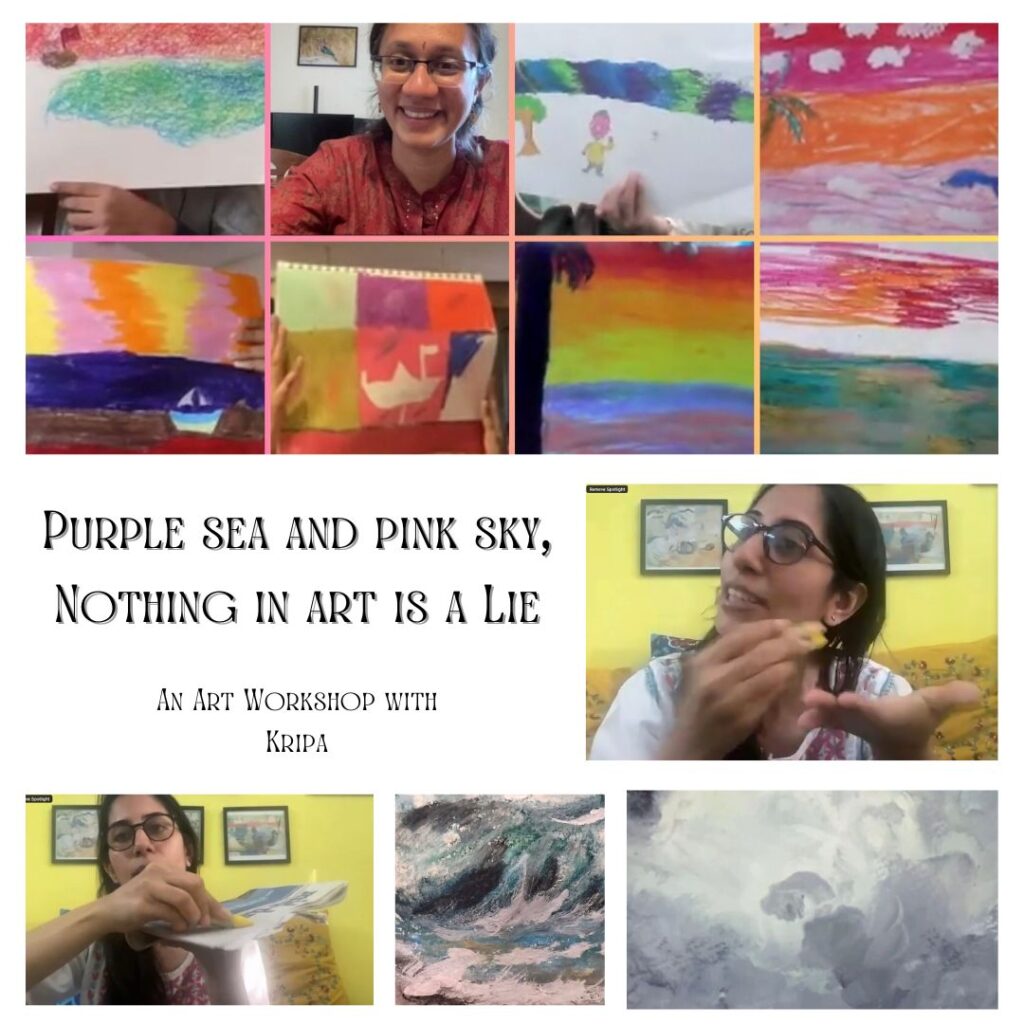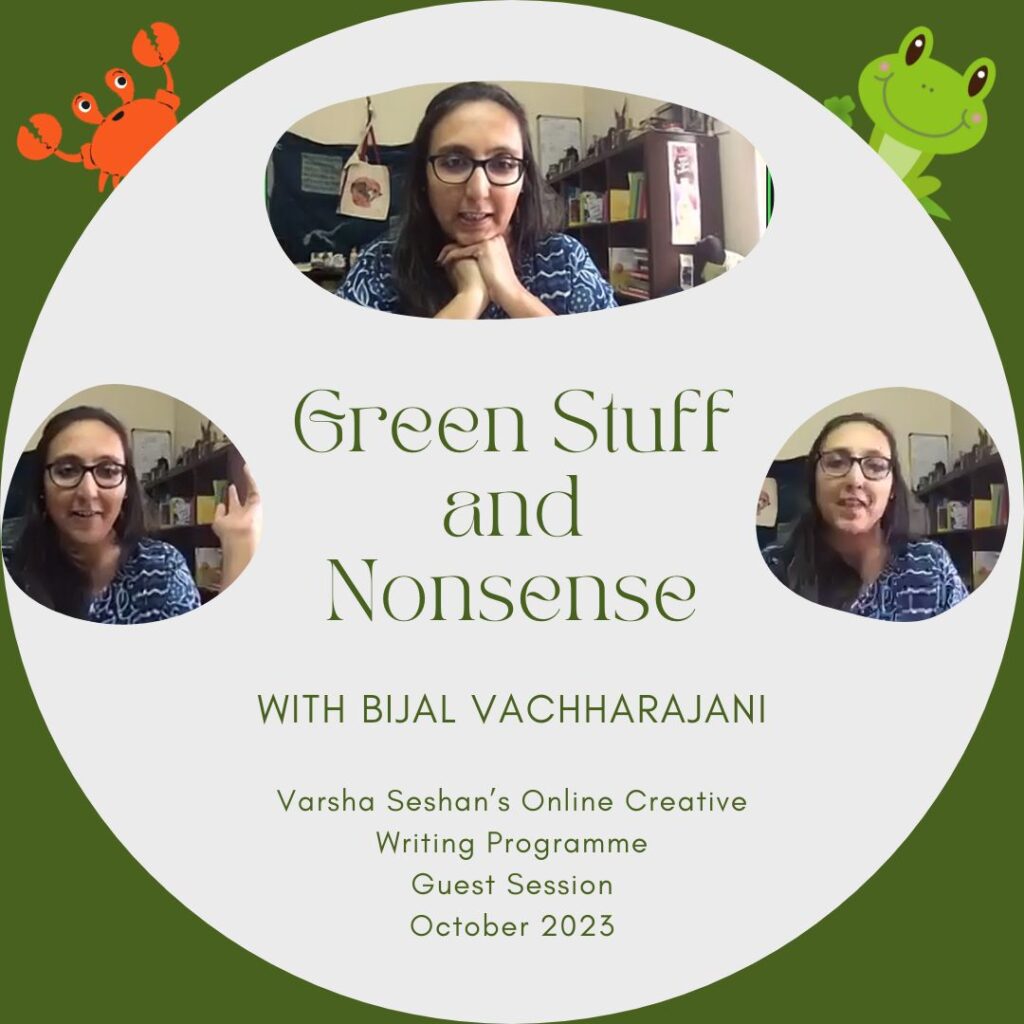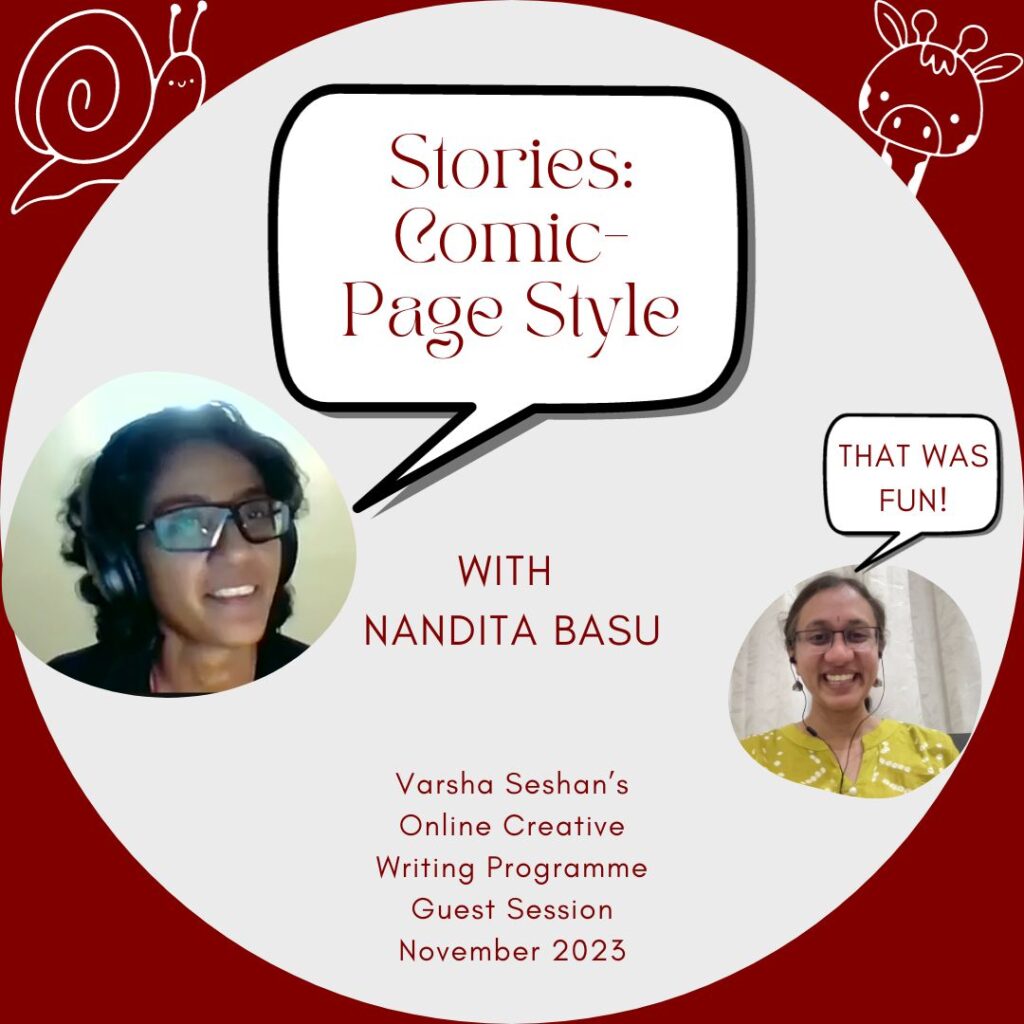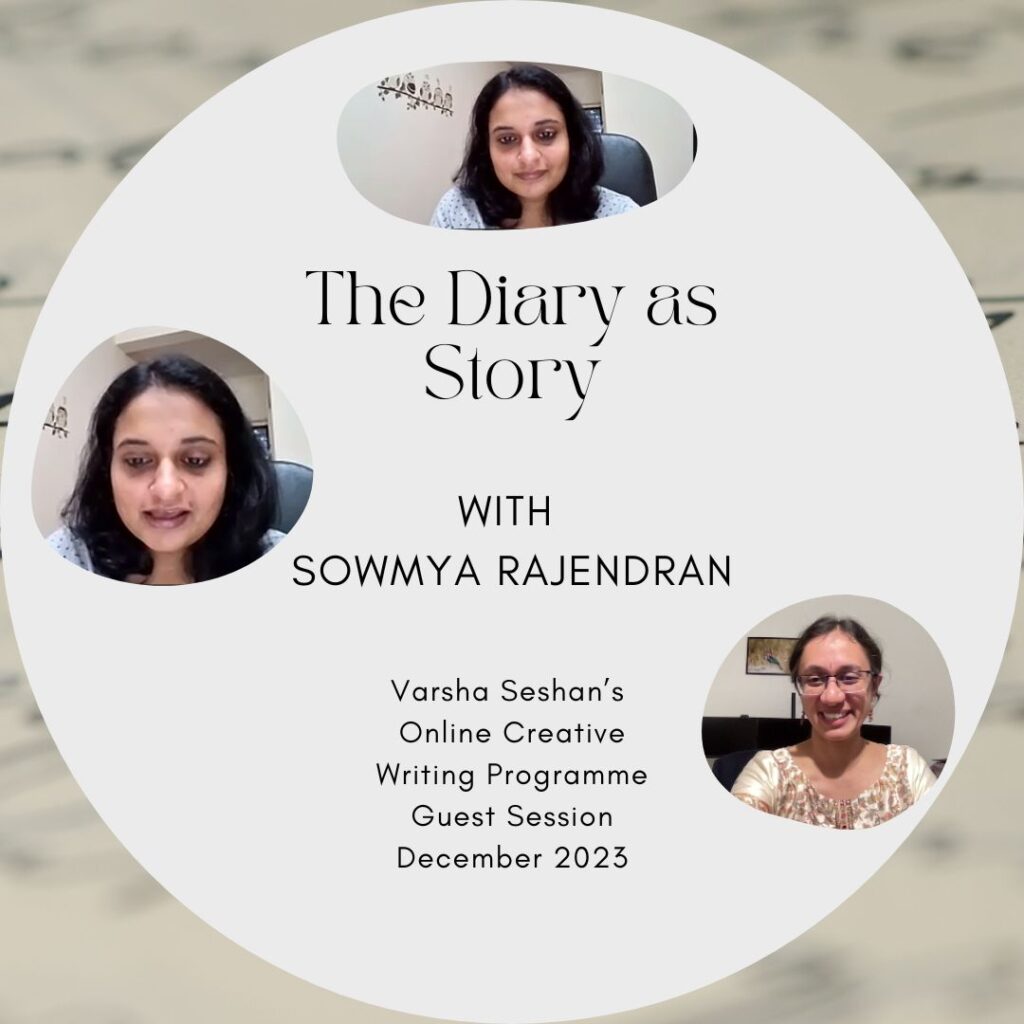Peanut Has a Plan
July 1, 2024
We read Peanut Vs the Piano over two years ago at my book club, and it was such fun! I wrote a blog post about one of the activities we did as we read the book, and I look forward to repeating the activity with a fresh batch of book clubbers as we read Peanut Has a Plan.
This hOle book is a lovely little chapter book about determination and kindness. With an enterprising character at the centre of the story, what starts off as a desire to earn money becomes much more than that. Peanut, together with her twin brothers Papad and Pickle, comes up with one plan after another to show that she’s responsible and can do something worth talking about at Show and Tell in school!

Names
Peanut, Papad and Pickle – I sure hope their parents named them after things they like! What if your parents named you after their favourite food? What would your name be?
As Peanut Has a Plan is the first book we will be reading at my book club next month, it’s a great way to introduce ourselves – tell us what you’re called, and tell us what you could have been called.
Summer Holidays
For Show and Tell in school, Peanut must talk about something new she did in the summer holidays. This is perfect for my book clubbers too! What did you do that you’ve never done before? What can you show us as you tell us your story?
Business Plans
I love stories about children’s money-making plans. Making Millions, Amelia Bedelia Means Business, Trunk Call for Ajju … How would you try to make money? Apart from the ideas in the book, what could you do to earn something?
Join my book club!
Registrations are now closed for the August-September 2024 edition of my book club. New batches begin every alternate month. Join my mailing list if you would like to receive email notifications about my programmes. Alternatively, follow me on social media – Facebook and Instagram – for regular updates.

The ABCs of Blogging
June 18, 2024
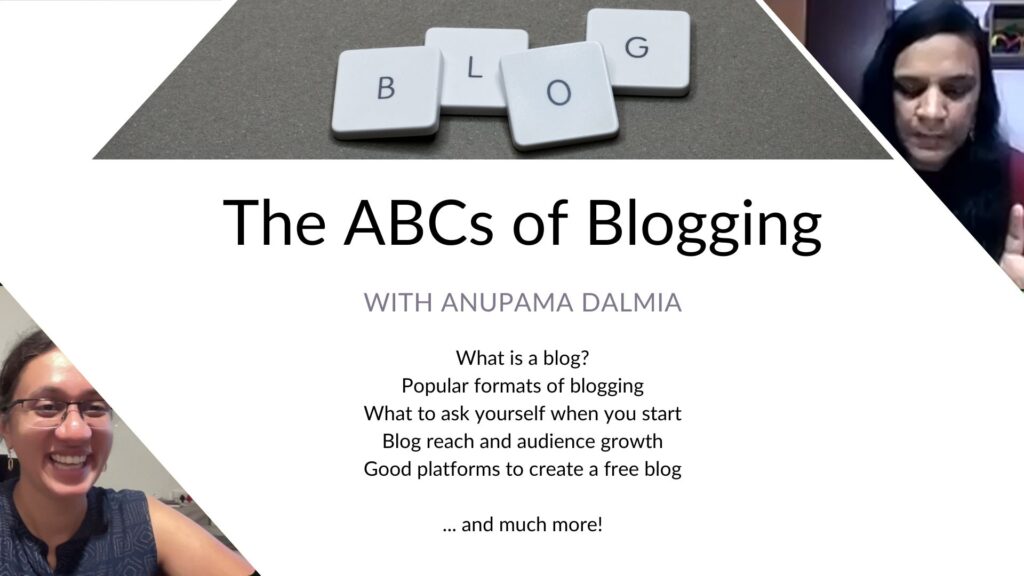
What an informative session we had with Anupama Dalmia!
Anupama began by discussing what blogging is. From there, we went on to so much more – blog formats (including vlogs and micro-blogs), finding your niche, and starting your own free blog. She then introduced the children to SEO and the backend, showing them how easy it is to start the process of blogging.
Importantly, she answered the question of why blogging could be a good idea – to build a discipline around writing. Once we start blogging, there is often a sense of accountability, the idea that writing and posting content is something that we need to do regularly and systematically. Where do we begin? How do we get noticed? What can we do to increase the reach of our blog posts? Anupama discussed all this and more in a single hour!
When guest speakers repeat something I keep saying in class, I’m always happy. For instance, I often ask children what the purpose of their piece is. What do they want the reader to feel? What are they trying to do with their writing? Anupama phrased it as WIIFM – what’s in it for me? As the audience, this is the question we ask. Why should I read your blog? It’s important to be able to answer that!
With this workshop on blogging (guest session #24!), we’re now drawing to the end of another writing programme. In October, the twentieth batch of my online writing programme will begin!
Character Design with Priyankar Gupta
May 19, 2024
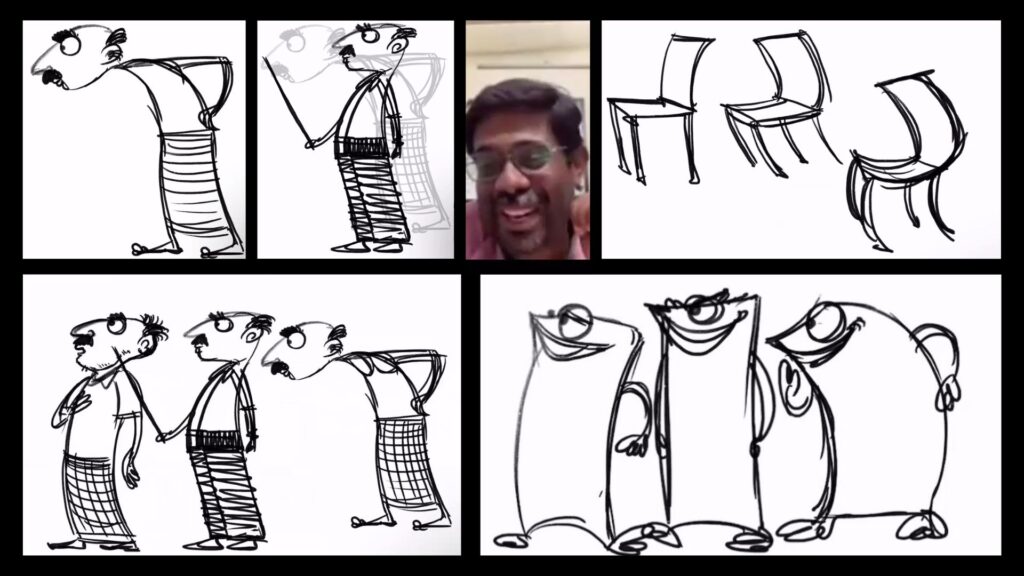
Practice. What a difference practice makes! Right through yesterday’s guest session on character design, I marvelled at how swiftly Priyankar Gupta created his characters. Talking all the time, explaining what he was doing, he was able to draw not one, but six full forms in fifteen minutes!
Characters, both human and non-human, are led by three parts of the body – the chest, the nose and the pelvis.
An inquisitive person tends to hunch. The whole body structure is led by the nose.
A confident person is led by the chest. This is why people in the army, or even dancers, tend to have accentuated chests.
All of us also have an aspect of us that is lazy, one that likes to sit and watch the world go by. This sort of character is led by the pelvis.
Once Priyankar had shared a few sample drawings, he asked us to draw characters of our own. Soon, the children shared sketches of chickens and grandmothers, pencils and teachers. And as the participants shared their work, we discussed the breaking of archetypes in subtle and not so subtle ways.
Priyankar ended the session with a quote from Neil Gaiman – make good art. No matter how you feel, draw. If you’re happy, angry, bored, annoyed … draw. For someone who’s barely drawn anything for years, it was an important reminder.
Draw. That’s it.
Ottoline at Sea
May 11, 2024
As far as possible, I try to source books from independent bookstores for my book clubs. And so, when Eureka Books informed me that Ottoline Goes to School was out of stock with the publisher, I decided to read Ottoline at Sea with the June edition of my book club instead! It feels like a win-win for me because I’m reading one Ottoline book with my May batch and another with my June batch!
Ottoline at Sea is another delightful book featuring the intrepid Ottoline and her friend Mr Munroe. Just like the others in the series, it is a perfect mixture of serious and hilarious because of the seriousness with which it addresses impossibility. I know that humour of this kind is not every child’s cup of tea, but the illustrations are sure to delight them all, even those who aren’t drawn into the story!
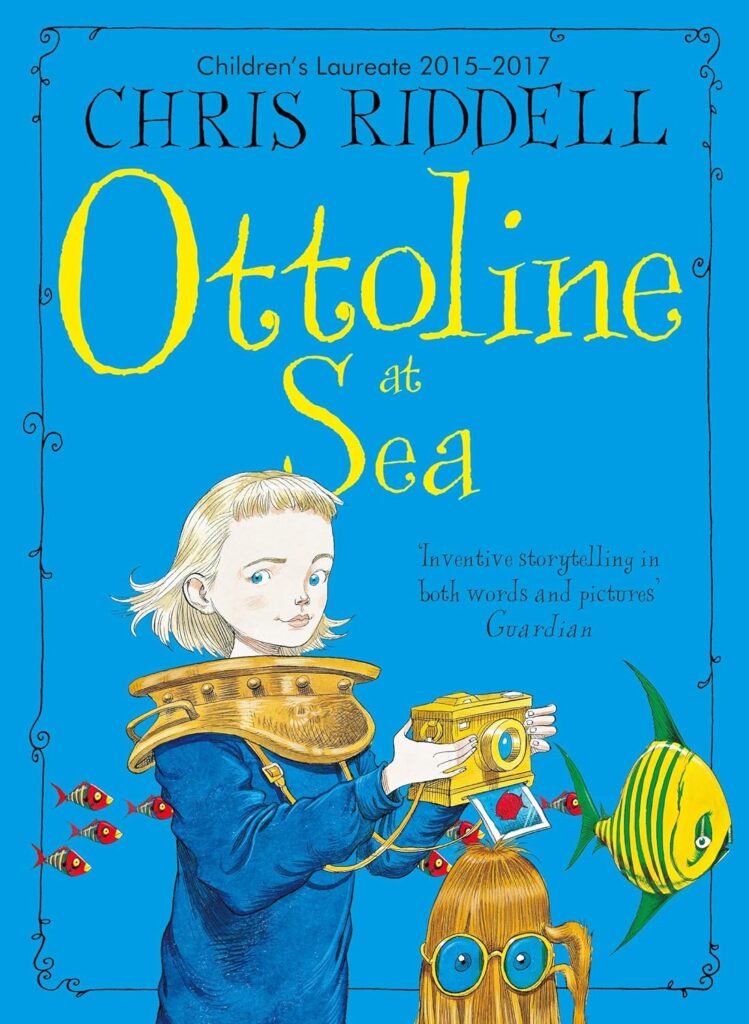
Collections
Just like when we read Ottoline and the Yellow Cat, we’ll talk about things we collect. Ottoline’s parents are “roving collectors”, and Ottoline herself has a postcard collection and a collection of odd shoes. What do you collect? I’d love to know, and I’d love to take a look!
Travel Journal
Children learn to express themselves through writing at different ages, but a travel journal does not require you to write much! Ottoline is wondering where to go on holiday and she doesn’t notice that Mr Munroe keeps giving her hints about wanting to go to Norway. When he disappears, she sets off for Norway – and this will be our prompt for a travel journal of our own. Through illustrations and words, I will ask the children to create a travel journal based on anyplace they’ve visited on holiday.
Design a Vehicle
Ottoline and Mr Munroe travel in unusual ways! Similar to the cars we designed as we read By Royal Appointment, we will design vehicles that could fly, dive, and perhaps even teleport! I can’t wait to see what the children come up with.
Join my book club!
Registrations are closed for this edition of my book club. New batches begin every alternate month. Join my mailing list if you would like to receive email notifications about my programmes. Alternatively, follow me on social media – Facebook and Instagram – for regular updates.

Reading and Writing Activities
May 8, 2024
I find so many resources on the internet that every so often, I try to return the favour by sharing a little in terms of resources and activities that have worked for me in class. Often, prepping for a lesson can be quite overwhelming, especially if you’re like me and like to have something planned for every minute of your lesson, plus a few extra activities just in case! In no particular order, here are a few things that have worked for me at my book clubs and writing workshops in the last few months.
Free Verse
I love teaching free verse! I’ve used all kinds of mentor texts in the past, including “Hope is the thing with feathers” by Emily Dickinson, which isn’t in free verse at all, but still works, as you can see below.
Both these poems are in issue 1 of WORDS, the e-magazine we create at my writing programme!
However, since I have children signing up for my writing programmes time and time again (Samanvitha is in my current batch too, for instance), I cannot reuse the same mentor texts and activities. And that is why stumbling upon a gem like In the Land of Milk and Honey was perfect!
We used this picture book in free verse to write poems of our own about places we know well. The text is perfect to explore imagery of all kinds, visual and non-visual. Additionally, the way in which Joyce Carol Thomas uses literary devices like metaphors, similes and personification makes In the Land of Milk and Honey a brilliant text to use in class!
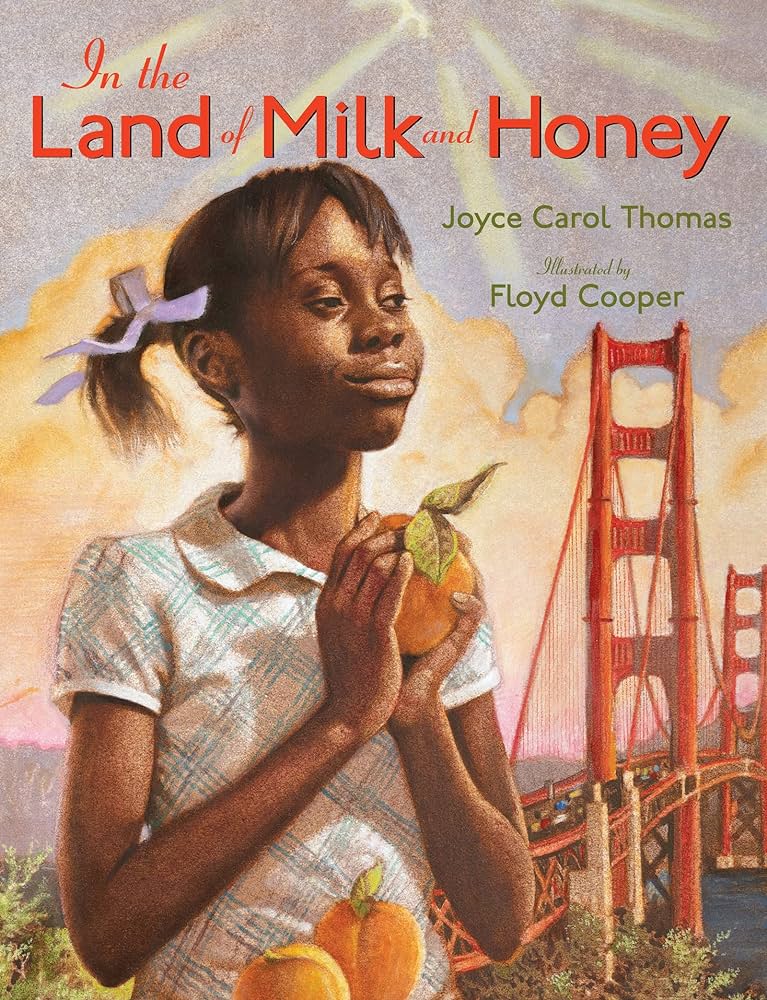
World Book Day Celebrations
I had three online sessions on World Book Day this year, and we did three different things with three different age groups!
With the youngest ones – ages seven and eight – we did a book scavenger hunt. This is always fun, but I’ve learnt through experience that I must give the children some time at the end of the hunt, before I continue with class, to put books back where they belong!
With the older ones, we did two versions of recreating a book cover. For ages nine and ten, we played with virtual backgrounds and imitated book covers. For the older ones, we tried to complete book covers by putting a book that has half a face in front of our own face. It was all fun!
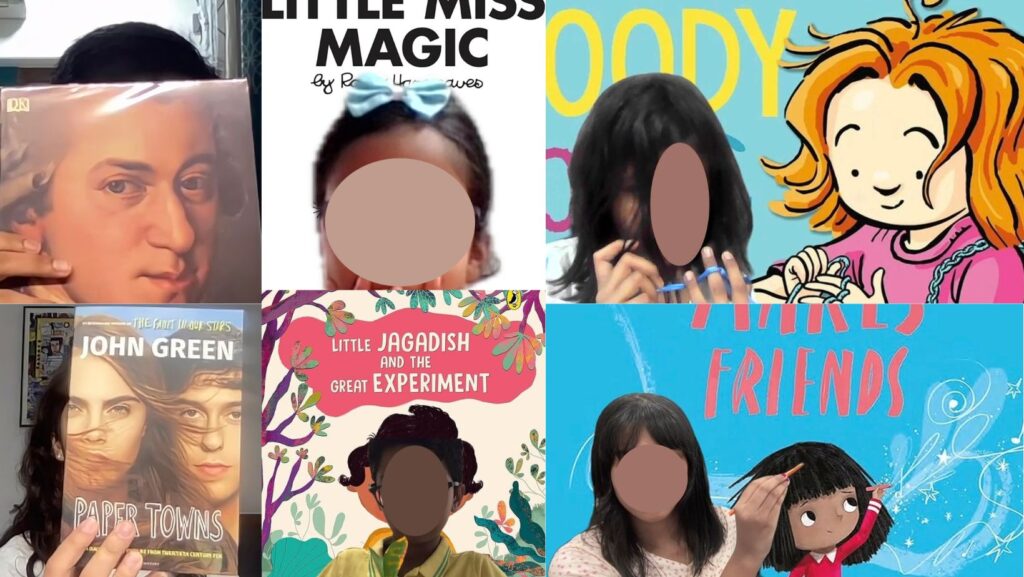
Fact Versus Opinion
When I teach nonfiction, we work a lot with fact and opinion. Often, opinions are more interesting than facts! Also, in the age of the internet, when you are sharing information about something that everyone has already heard of, what are you doing that is new? I can find out about monuments and birds by searching online. I’m interested to know what you think or feel about a topic!
And that is why when we read The Misadventures of a Lightning Thief, I asked the children to tell me about famous monuments, but more–about why they enjoyed visiting these places.
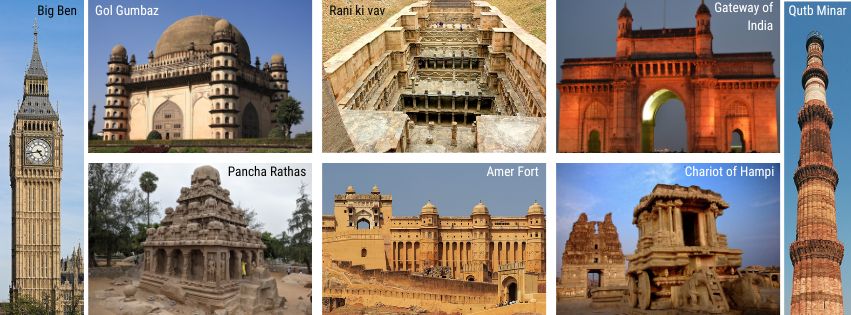
All the above images are via Wikimedia Commons
CC BY 3.0 <https://creativecommons.org/licenses/by/3.0>: Big Ben – Diliff; Chariot of Hampi – Apadegal; Gol Gumbaz – Meesanjay
CC BY-SA 4.0 <https://creativecommons.org/licenses/by-sa/4.0>: Qutb Minar – Sfu; Amer Fort – A.Savin; Pancha Rathas – Vinayaraj; Gateway of India – SriSriChinmaya; Rani ki vav – Rupeshsarkar
This was a great activity, especially as we linked it to a creative writing exercise once we’d finished reading the book!
There’s so much more that has worked for me in the past, and I hope to continue sharing ideas and resources. In the meantime, if you’re looking for more activities, take a look at my extensive bookish activities. Although they’re book-specific, a lot of activities can be paired with other books too! Also, taking a look at the Resources category on my blog could help. Here’s one last image to end my post – a tower of books that I’ve read at my book club so far!
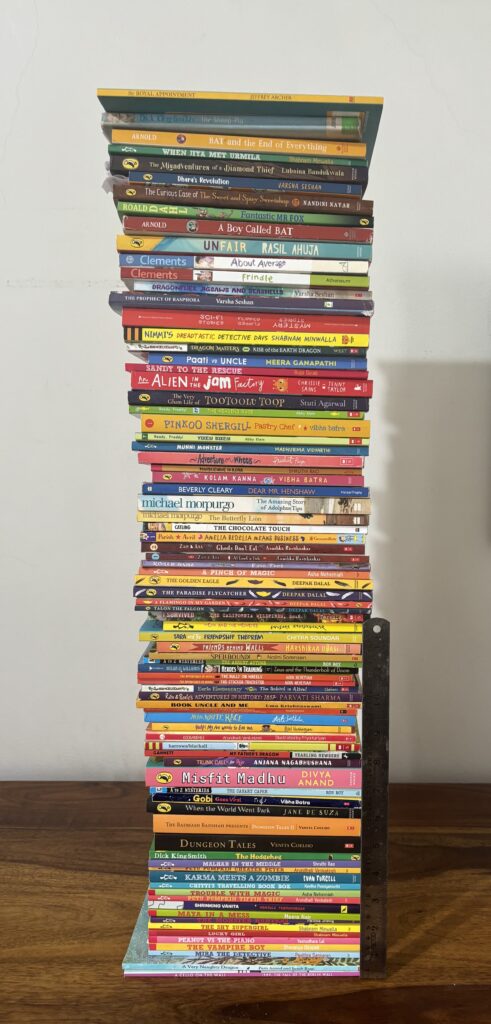
Lucky, It’s Summer!
May 7, 2024
A story told from the point of view of a Cocker Spaniel–what’s not to love about it? As a book club read, Lucky, It’s Summer! is perfect in so many ways. The lightheartedness of the story, the repetition, the in-built activities–everything about this book by Nalini Sorensen and Shamika Chaves promises to be fun! Besides, for many children who are part of my book club, it will be the summer holidays as we read the book, so what better time to enjoy it together?

Speech Bubbles
I often work with role-play at my book clubs and while some children instinctively understand how punctuation works for dialogue, others don’t. An activity where children have to write what characters say in little speech bubbles is perfect for this. What exactly does each character say? Can we put the words into the appropriate speech bubbles?
Point of View
Lucky has never seen a tortoise before, and she describes Sabby in a very interesting way! Thanks to the cover, we know what animal Sabby is, but what if we encounter a new animal altogether? Perhaps I’ll show the children pictures of a tapir, an axolotl, a pink-fairy armadillo and more, and ask them to describe what they see!
Favourite Animals
I love talking to children about their favourite animals. I’ve encountered all kinds of favourites, from pangolins to rabbits, elephants to dolphins. I’m looking forward to listening to children do this again!
Join my book club!
Registrations are closed for this edition of my book club. New batches begin every alternate month. Join my mailing list if you would like to receive email notifications about my programmes. Alternatively, follow me on social media – Facebook and Instagram – for regular updates.

The Golden Eagle
May 6, 2024
Krishna Bala Shenoi’s artwork is stunning. From the black-headed stork to the green pigeon, the pelican to the doves – the illustrations leap off the pages making The Golden Eagle a visual treat.
But of course, I choose books based on the story, not just the pictures, and The Golden Eagle is a pacy, exciting read.
The white-headed squirrel Shikar has questions. Who were his parents? How did he make friends with the birds? Why did Kabul the bulbul become a mother-figure to him, and why are Lovey and Dovey like his aunt and uncle? The two doves, Lovey and Dovey, set out to tell him his story. It’s a long story, full of twists and turns, a story about Regal the golden eagle.
I loved The Golden Eagle. Suspense, drama and beautiful characters make it a pacy read, sucking us into a book that full of politics, intrigue and betrayal.
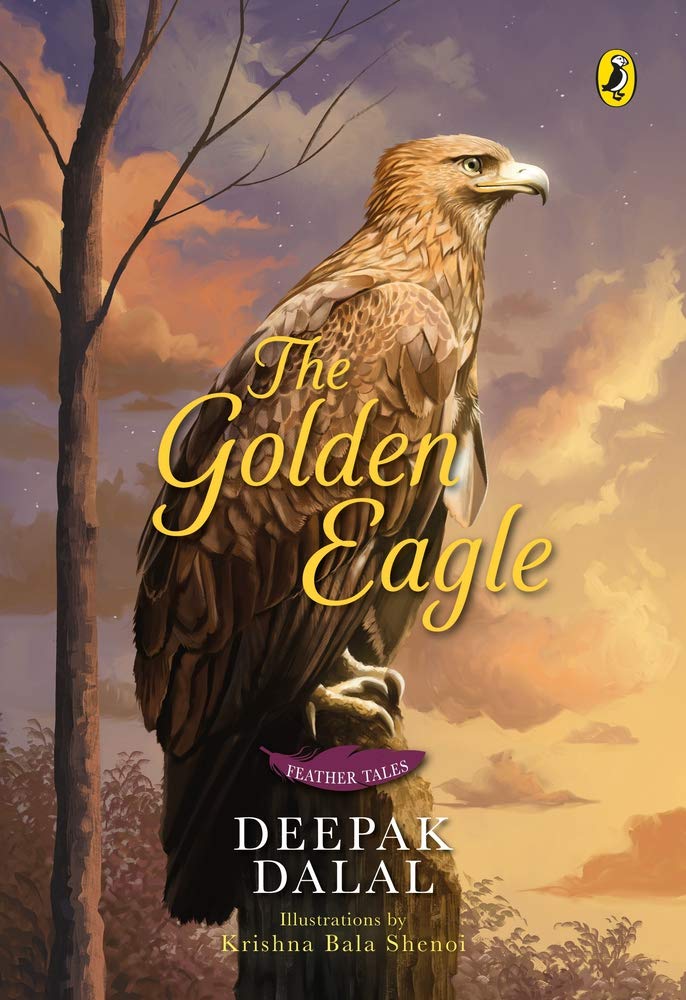
Suspense Writing
Writers can be plotters or pantsers, and I’m very much a pantser when it comes to my first draft. I like to see where the story takes me before going back to rewrite it to add foreshadowing and clues for the reader. And yes, that’s the crux of it – if you don’t plot your story, you need to go back and rewrite it.
With The Golden Eagle, I’d love to discuss what the readers are led to believe. What clues does the author give us? What do we feel about the characters? Is Mike the shrike suspicious? How about Chorus the thrush? And Teen the green pigeon? Pecan the pelican?
In a book with so many powerful characters, a discussion of this sort can lead to a wonderful activity on creating suspense in stories of our own!
Anthropomorphism
What makes anthropomorphism believable or not? Unlike in The Paradise Flycatcher, the human Mitalee has no role to play in The Golden Eagle. The whole story is about the birds. Does this make the tale more or less believable?
Animal stories were a childhood favourite of mine and I believe that children are drawn to animal stories because there’s magic in the relationships between animals and humans. Let’s see how we can create animal stories of our own!
Playing with Words
I love the number of bird idioms Deepak Dalal uses through the book! ‘Free as a bird’ forms the core of The Golden Eagle, but there’s so much more. Regal watches the bird kingdom with eagle eye. The doves eat like birds; they’re mocked for being bird-brained; some birds wing it because they don’t know what lies ahead. We’ll do activities around these phrases and see whether we can do written exercises that explore idioms based on a subject. I’m sure it’ll be fun!
Join a programme!
Registrations are closed for this edition of Read, Write, Explore. New batches begin every alternate month. Join my mailing list if you would like to receive email notifications about my programmes. Alternatively, follow me on social media – Facebook and Instagram – for regular updates.
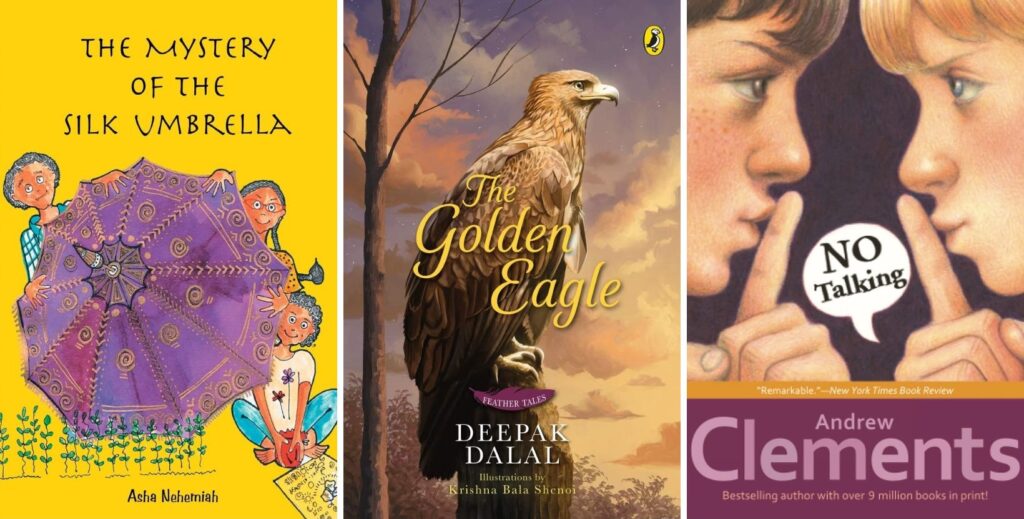
We’ve read The Golden Eagle before at my book club–three years ago! I wrote about it too; take a look!
We’ve also read all the others in the Feather Tales series:
Ottoline Goes to School
May 5, 2024
We read Ottoline and the Yellow Cat at my book club last year, and it was such fun. I enjoy silliness of this kind so much that the book was on my list of favourite chapter books from 2023.
And Ottoline Goes to School, which I read in 2022, was one of my favourites from that year. I’m waiting to read it with my book club!
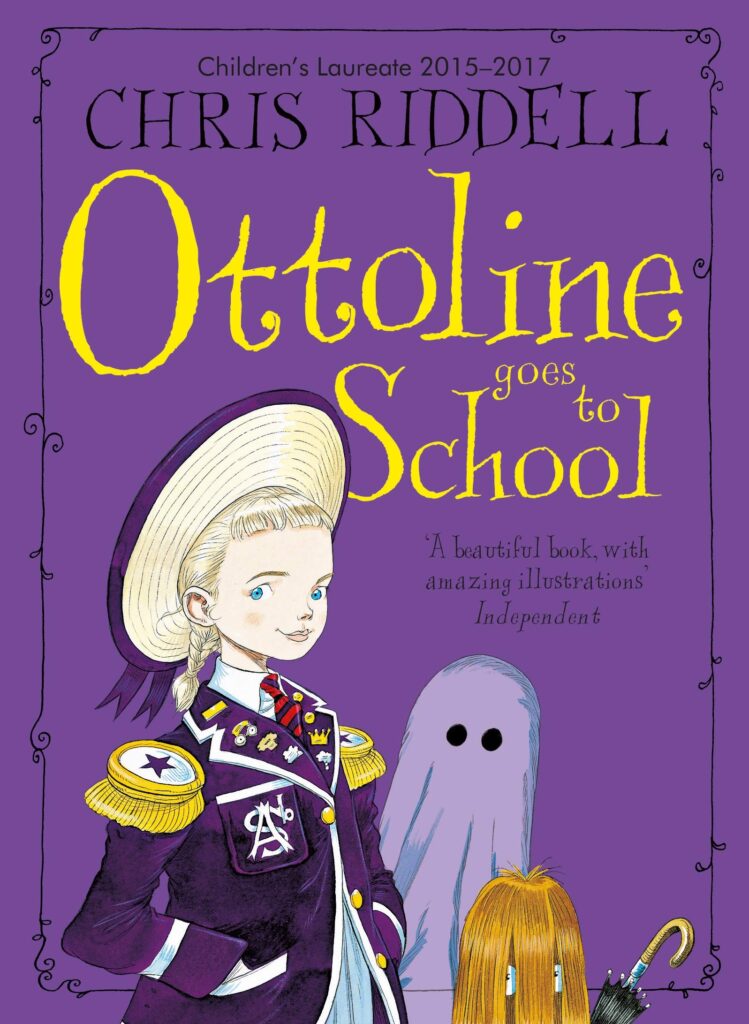
Picture Postcards
We’ve made picture postcards at my book club before and it is so much fun! I remember doing it when we read The Absolutely True Adventures of Daydreamer Dev. I sent my book clubbers postcards after that too, which was part of the fun.
Since there are so many letters and postcards in Ottoline Goes to School, we’ll make one of our own!
Unusual Subjects
At the Alice B. School for the Differently Gifted, there are some very unusual subjects, like Giggling Studies and Weeping Workshop. What other funny, impossible subjects would we like to study in school?
Taking this further, we’ll also look at the days of the week and rewrite it in an unusual way!
Different Gift
Right through Ottoline Goes to School, Ottoline can’t figure out what her unusual gift is! What gifts do we have? What do we think we’re good at, and what do we feel we could get better at with a little more practice? I’d love for the children to tell me and show me!
Join my book club!
Registrations are closed for this edition of my book club. The next edition will be held in June 2024. Join my mailing list if you would like to receive email notifications about my programmes. Alternatively, follow me on social media – Facebook and Instagram – for regular updates.

No Talking
May 4, 2024
No Talking is such a fun book! I’m often wary of ‘Boys vs. Girls’ stories because I don’t like books that reinforce stereotypes. No Talking does the opposite; in fact, rather too explicitly so, for me. Despite that, I thoroughly enjoyed the book. I loved how a contest between the boys and the girls in a class slowly morphs into a team game, where the students overcome their differences and come together. What emerges is a school story that is utterly believable and good fun!
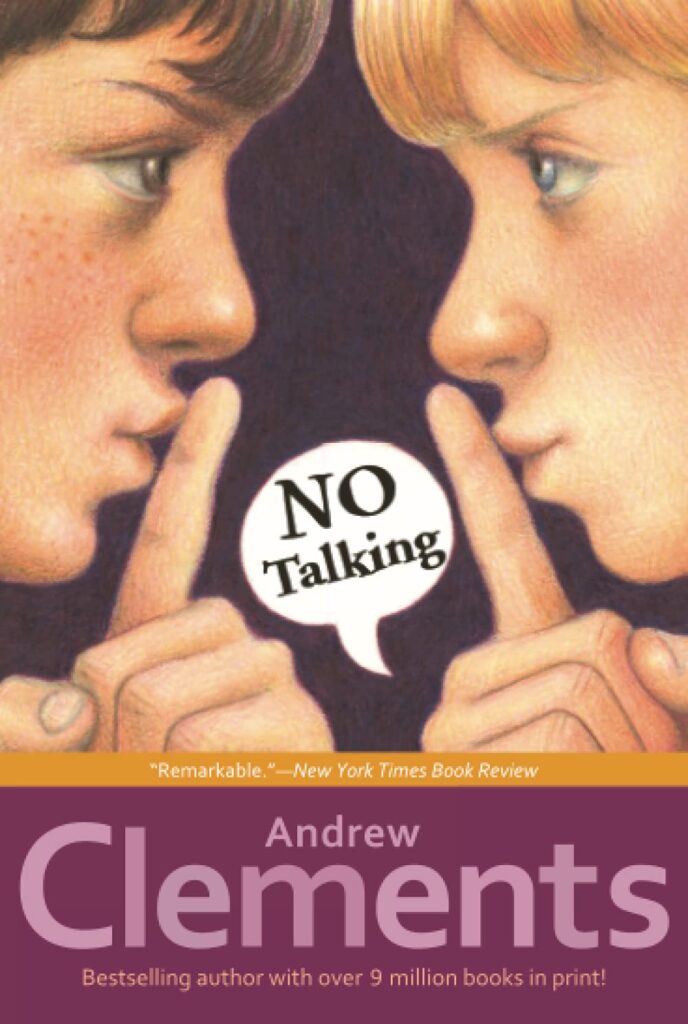
Three Words at a Time
I’ve lost count of the number of times I’ve played the one-word story and the one-phrase story. In No Talking, Mr Burton introduces the three-word story, and I love it! It’s perfect for my book club too. Can we create a story together, three words at a time? I’m sure we can!
Three Word Debate
Mr Burton takes the three-word challenge further with a debate: Should there be soft-drink machines in school cafeterias?
I’ve never worked on debating at my book club before, but I’m curious about giving it a shot! I can’t wait to see how it works!
Dialogue Writing
Writing is an important part of Read, Write, Explore, and the dialogue in No Talking sparkles – all the more so because it’s sparse and well thought-out. Once we’ve finished reading the book, we will try to write dialogue of our own, challenging ourselves to use as few words as possible in each speech.
Join a programme!
Registrations are closed for this edition of Read, Write, Explore. New batches begin every alternate month. Join my mailing list if you would like to receive email notifications about my programmes. Alternatively, follow me on social media – Facebook and Instagram – for regular updates.

I love Andrew Clements’s books! We’ve read:
I’m sure we’ll read more as the months go by!
A Giant Leap
May 3, 2024
I read and reviewed A Giant Leap three years ago. Since then, I’ve been thinking about introducing it to my book club, but it’s shorter than the books I usually select, making me wonder whether it would be too simple a read. Yet, so much draws me to the book, from the childlike perspective to the exploration of a landmark event, that I decided we would read together. Here’s what we’ll do with it!
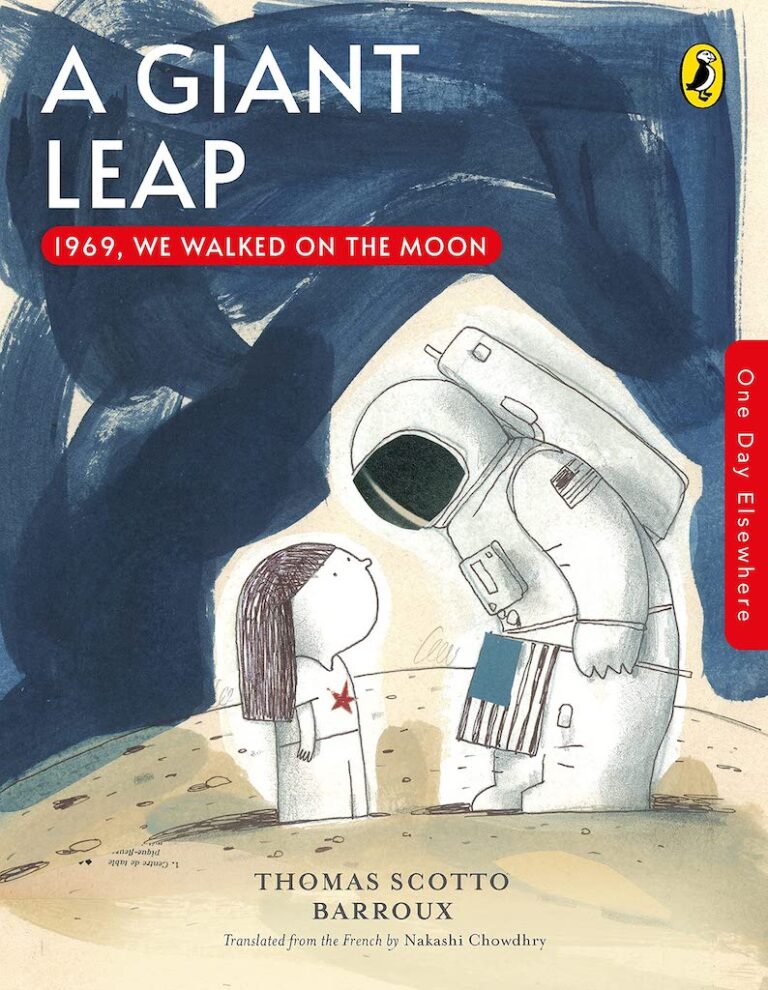
Gravity
I know that gravity as a concept is one that children study much later, but a lot of them have visited upside-down “museums”. What do they think will be most difficult to do in a place without gravity? What do they think will be most fun?
Moon Stories
There are so many more stories about the moon! Who is the man on the moon? Is there a rabbit on the moon? Does a monster eat the moon every month?
We’ll explore a couple of stories, where they come from, and then talk about things that we are still curious about – the mysteries at the end of the book.
Scrapbook
Journaling is fun! We explored it a little when we read Munni Monster some time ago, but we’ll play with it some more next month with another set of children. As we read, we’ll make one page of a scrapbook. Sketches, thoughts, ideas and feelings – everything has space in a scrapbook. Using visual aids, I’ll invite the children to write a poem or a paragraph about how they would feel if they were astronauts on the moon. Whom would they think of? What message would they send home?
Join my book club!
Registrations are closed for this edition of my book club. New batches begin every alternate month. Join my mailing list if you would like to receive email notifications about my programmes. Alternatively, follow me on social media – Facebook and Instagram – for regular updates.

The Mystery of the Silk Umbrella
May 2, 2024
The Mystery of the Silk Umbrella is the sixth book by Asha Nehemiah that we’ll be reading at my book club! And it promises to be just as much fun as the others.
Like any good mystery story, The Mystery of the Silk Umbrella keeps you reading. Who is the mysterious intruder at the beginning of the book? What could Shantha athai, who really has no valuables to speak of, be hiding that is so precious? Who wants what she has, and how does the silk umbrella fit into all this?
With so many chapters ending in cliff-hangers, the book compels you to read on, intriguing and humorous at the same time. Gutsy heroes, nefarious villains and a range of colourful side characters make this a fun read, which I’m looking forward to introducing to my book club!

Precious Objects
The silk umbrella is special to T. Satyavan for secret reasons. There are memories associated with that umbrella, precious memories that are almost forgotten. This is the perfect time to explore objects that are precious to us for various reasons. I’d love for the children to tell me about precious toys or books, clothes or jewellery. What do they hold precious, and why?
Book Discussion
The Mystery of the Silk Umbrella is full of things we can discuss! What guesses do we make about the characters based on their names? Satyavan, RaVaNa, Kharabi Nastinovich … What other names can we come up with?
At the end of several chapters, we’re left wondering what will happen next. Based on the clues left by the author, what do we think could happen? How will the drama end?
Mystery Story
What are the elements of a mystery story? How can we keep the reader engaged?
As creative writing is an integral part of Read, Write, Explore, we will work on a series of writing exercises, investigating the ways in which writers create suspense and evoke curiosity. If time permits, we will also write a complete mystery story!
Let's read together!
Registrations are closed for this edition of Read, Write, Explore. New batches begin every alternate month. Join my mailing list if you would like to receive email notifications about my programmes. Alternatively, follow me on social media – Facebook and Instagram – for regular updates.

Ostrich Girl
May 1, 2024
I love introducing children to brand-new books, hot off the press! I read Ostrich Girl written by Lesley D Biswas and illustrated by Anupama Ajinkya Apte, and I loved the possibilities of exploring this book with my book club! Here’s what we’ll do as we read.
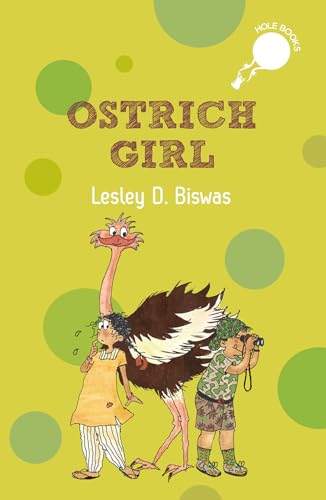
Sounds
The Secret Songsters imitate bird calls to fool tourists into believing that there are lots of birds on Henry Island. That’s the perfect opportunity for us to explore bird calls! I will ask the children to imitate any birds they know, and then I’ll play a few bird calls for them to identify.
Bird Trivia
Children love trivia! I look forward to asking the children to talk to me about birds they know, after which we will talk about a few unusual birds—including the ostrich, the roadrunner, the penguin, the drongo, and more! We’ll also look at pictures of all the birds Ostrich Girl mentions.
Word Games
Spotting birds is fun! Even though we might not be able to do that together, unless I’m lucky enough to have a feathered visitor in my balcony during class, we’ll do a word search puzzle based on birds, both the ones we find in the book and others that we find easily around us.
Join my book club!
Registrations are closed for this edition of my book club. New batches begin every alternate month. Join my mailing list if you would like to receive email notifications about my programmes. Alternatively, follow me on social media – Facebook and Instagram – for regular updates.

How to Rhyme Without Reason
April 21, 2024

How I love guest sessions! Yesterday’s workshop on nonsense verse with Anushka Ravishankar was a treat. It’s delightful how serious nonsense verse is! Full of contradictions, full of rules (of what nonsense verse is not), and full of surprises, we learned so much and wrote nonsense poems of our own too.
Essentially, nonsense writing is a serious kind of writing which makes no sense. Does this seem contradictory? That’s where the humour of nonsense lies. While gibberish is not nonsense, we learned how we could use made-up words as part of a larger text, like in the poem ‘Jabberwocky’ by Lewis Carroll. I agree with Anushka when she says that it’s a shame that so many of Carroll’s words are now in the dictionary. They were never supposed to make sense!
We had a FULL batch yesterday, and the participants had dozens of questions, ideas, and poems to share. From Sukumar Ray to Shel Silverstein, we explored a range of writers, listening to all kinds of nonsense poetry.
For me, the best part was the very clear and organised set of techniques Anushka shared with us. How do we actually go about writing nonsense verse? When is it nonsense verse and when is it gibberish or fantasy? How can we straddle sense and nonsense so that our poems almost make sense?
Anushka ended the session with an exercise on nonsense verse, which was especially lovely, for it revealed how well the participants caught on to the sense of nonsense!
Why I Think Online Workshops Are More Effective than Offline Ones
April 12, 2024
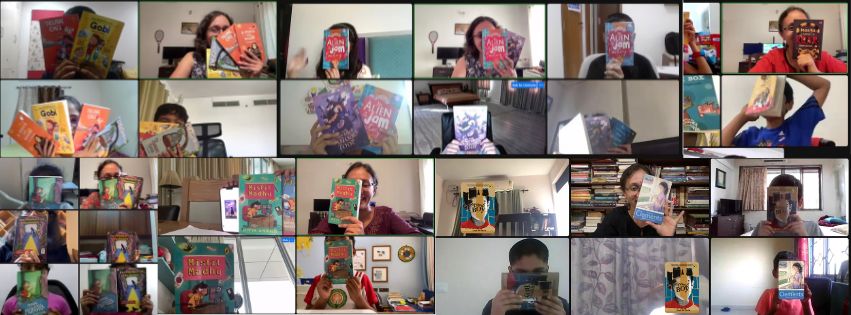
A Little History
I started conducting reading and writing workshops for children in 2013 at the British Library, Pune. It was fun, and the library space was exciting. Both as standalone events and as part of the library’s larger Reading Challenges, it seemed to me that libraries were ideal for workshops of the kind I liked to conduct.
Soon, I contacted other libraries and conducted sessions elsewhere too – at Just Books, Atta Galatta, The Story Station … Sometimes, the response was excellent, overwhelming. At other times, no one showed up.
As someone starting out, this was, naturally, demotivating! But I kept at it … for reasons I won’t get into right now.
The Current Scenario
Since 2020, I’ve been teaching primarily online. And in some ways, teaching online is the same. For instance, right now, four of my six batches are sold out! All my batches have enough participants for me to go ahead and conduct my sessions, and that’s always exciting.
But that doesn’t mean I haven’t cancelled sessions in the past. I haven’t (yet) had to cancel a writing programme, but there have been book clubs that have had a rather underwhelming response, especially as post-pandemic, parents are keen on reducing their children’s screen time.

Offline to Hybrid
But here is where things get interesting.
I started running a writers’ club at a school in Pune in 2015. Pre-pandemic, online sessions were out of the question. We had fun; we even brought out a book called Flickering Flames, celebrating the school’s sesquicentennial year.
In 2020, we discontinued the writers’ club, thanks to covid. I got busy with my own workshops and programmes, and I finally agreed to start teaching again in 2023, on the condition that I could conduct some of my sessions online when I was travelling.
At the end of the academic year, I asked the children to submit their best pieces to me, which I compiled in an e-magazine.
What I Noticed
And this is where I come to the most interesting statistic. Over 70% of the pieces submitted to me were written during our three or four online sessions, rather than during the 20 odd offline sessions!
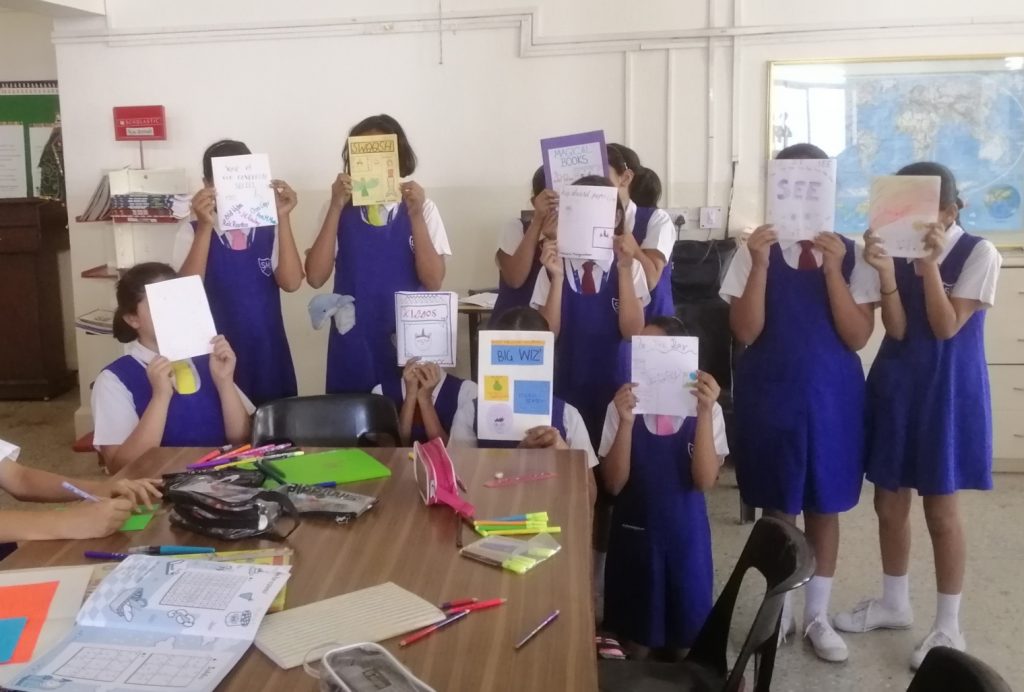
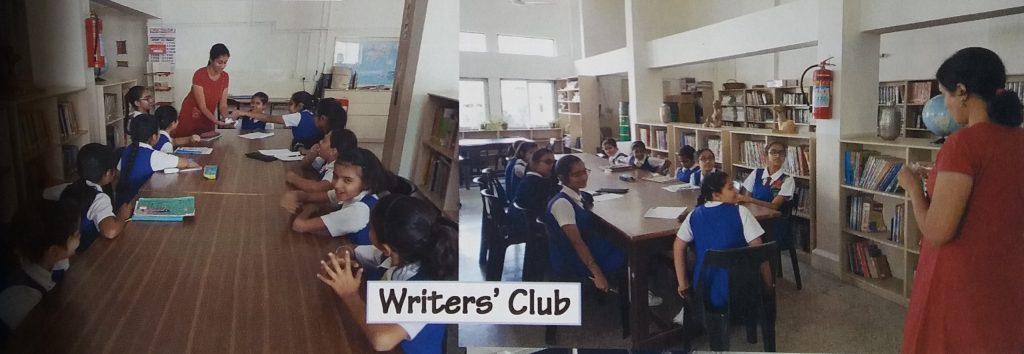
Also interestingly, I had nearly 100 participants who stayed with me right through the year at this offline, in-person writers’ club, and our magazine was all of 16 pages long.
At my online creative writing programmes, I have had between eight and 18 participants, and each issue of our e-magazine has been between 40 and 72 pages long.
Let me quickly say that not everything children write goes into the e-magazine! I want my participants to edit and rewrite, not submit first drafts. So, we’re talking about 40 to 72 pages of hard work, revisited and reworked many times over!
Why This Difference?
To me, the answer is clear. Online, children are comfortable. They are in their own safe spaces, free to express themselves without the distractions of borrowing an eraser from someone on the other side of the room or listening to whispers behind them. They are focused and interested. In the case of preteens and teenagers, at home, they are less concerned about the image they portray because they can simply switch off their cameras.
All in all, they’re in a space more conducive to learning, creating and imagining than a noisy classroom full of boisterous peers.
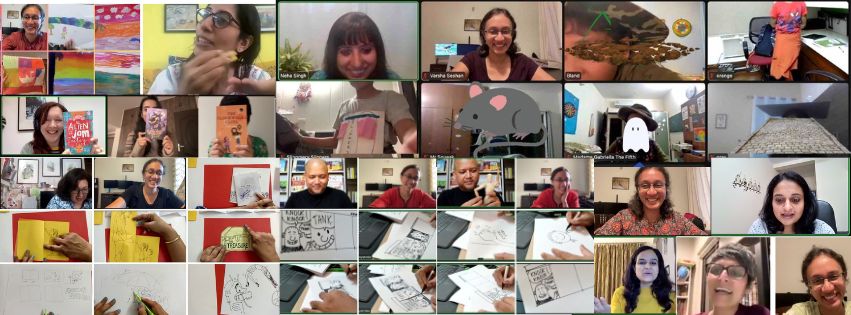
Taking This Further
Of course, I must share this with a disclaimer: I am not saying that all education is more effective online. There’s a big difference, for instance, between school and the workshops I conduct. Children join my sessions because they want to join. For the most part, they enjoy reading and writing, and when we remove distractions, they perform more freely, and consequently, better.
But the advantages of online workshops don’t end here. The children at my online writing programmes have the opportunity to interact with experts from all over the world. I have had guests from the US, Malaysia and the UK, as well as different parts of India–Mumbai, Kolkata, Bengaluru and more!
Safe spaces, the freedom to switch off your camera, spell check on your computer, fewer distractions, interacting with others from around the world … what’s not to like?
And that’s why, if you ask me what is better, online or offline workshops for children, I’m going to stick my neck out here and say ‘online’. For reading and writing, it’s online all the way.
If you would like to know about my online prgrammes (or even my offline ones!), join my mailing list. Alternatively, follow me on social media – Facebook or Instagram – for regular updates.
Strangus Derangus
March 7, 2024
Strangus Derangus & Other Adventures of Little Shambu is another book that I enjoyed hot off the press. It’s a collection of short stories, perfect for my book club because we can read three full stories together in class, leaving the other three for the children to read on their own.

Role Play
There’s nothing like role play to help children understand how dialogue and all its complicated rules work! When we read The Reading Race and Yikes! Bikes!, I realised that although children love role play, many of them take a little time to figure out who’s saying what. By the end of it, though, everyone enjoys it tremendously.
Strangus Derangus & Other Adventures of Little Shambu is dialogue-rich, making it perfect for an activity of this sort!
Exhibition
In the story “Strangus Derangus”, Little Shambu sets up an exhibition of interesting things to show his friends, and he charges them to visit! What interesting things would you select for an exhibition? What stories could you tell about the things you select?
Animal Puzzles
Little Shambu loves animals, and so do most of the children I meet. It’s the perfect time to do a word puzzle on animals, and perhaps a few other animal activities too!
Join my book club!
Registrations are closed for this edition of my book club. The next edition will be held in June 2024. Join my mailing list if you would like to receive email notifications about my programmes. Alternatively, follow me on social media – Facebook and Instagram – for regular updates.
I’ve lost count of the number of times I’ve been asked how to inculcate the habit of reading in children.
My first response is always to tell parents to set the example–let children see you reading.
Then, create a culture around reading. Make reading fun, not educational!
And that’s why book clubs are great. They’re full of laughter and activities, making the experience of reading exciting, something that children can look forward to. The younger they start loving books, the more likely they are to keep reading!
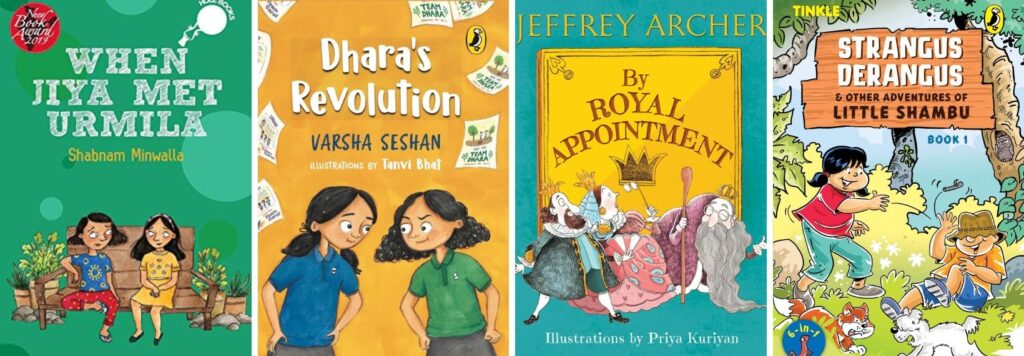
The Curious Case of the Sweet and Spicy Sweetshop
March 6, 2024
Ghosts, suspense, smart children and the most delicious-sounding foods come together in The Curious Case of the Sweet and Spicy Sweetshop by Nandini Nayar. Vishnudas Mithaiwala owns The Sweet and Spicy Sweetshop, and everything seems to be fine–until two children turn up claiming to be his estranged sister’s child! Whom should Vishnu believe? Whom should we believe? And more, what can we make of the fact that Laddoo begins to see ghosts in the house?
I enjoyed reading this book about rivalry and teamwork, secrets and emotion. It’ll be fun reading it with my book club too!

The Recipe Book
The Recipe Book is a family heirloom belonging to the owners of The Sweet and Spicy Sweetshop. In reality too, each family’s food is unique. Let’s find out about what foods we enjoy!
The best part about an online programme is the fact that children sign up from all over the world. This is a great place to polish our interviewing skills and learn about food from different cultures. In pairs or groups, we will explore foods that we associate with home, with festivals, and with grandparents. It’s time to find out more about one another and share ideas and experiences!
Character Sketches
Who is Revati’s child and who is an imposter? Halfway through the book, we’ll stop and look at all the clues we’ve collected. What do we know about the characters in the book, and how do we know what we know? Making predictions, drawing inferences and reading closely for detail make book clubs more engaging!
Ghosts
Laddoo can see ghosts! How would you react if you saw a ghost? Do you think people would believe you if you told them you could see–or sense–phantom-like beings?
Taking this further, we will engage in a little writing, exploring how we create the setting of a ghost story, based on what we want our readers to feel.
Join us!
THIS BATCH IS SOLD OUT!
The next edition of Read, Write, Explore will be held in June 2024. Join my mailing list if you would like to receive email notifications about my programmes. Alternatively, follow me on social media – Facebook and Instagram – for regular updates.
Read, Write, Explore is a reading programme that combines the joy of a book club with an introduction to creative writing. It’s perfect for children who enjoy reading and want to explore writing without the pressure of an intensive programme that involves editing and rewriting.
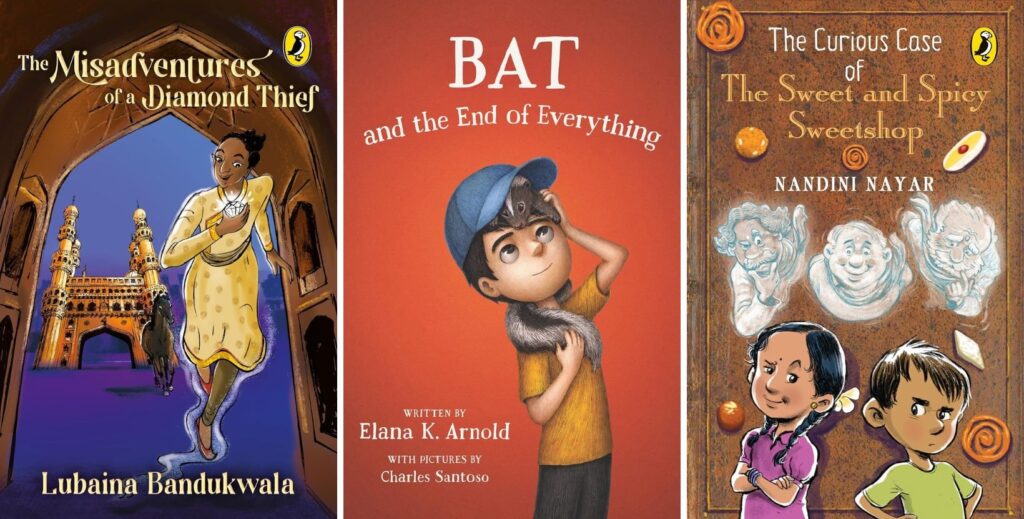
By Royal Appointment
March 5, 2024
Although I did read several books by Jeffrey Archer when I was in college, I never grew to be a fan the way so many of my friends were. Yet, I thoroughly enjoyed By Royal Appointment–rendered even more delightful by Priya Kuriyan’s illustrations.
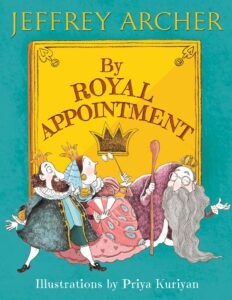
By Royal Appointment
There’s nothing like listening to the author read out a part of the book, and Jeffrey Archer has shared a 6-minute excerpt on his website, which we will listen to together. We will then try to design a “By Royal Appointment” seal, the one that we think will be found on every product tested by the King and Queen of Littleland.
Echo and Narcissus
The best part of reading a short book is that we have the time to explore so much else! Queen Echo of Littleland is a zany character, but she gives us the excuse to explore the word echo and the story that led to the creation of the word. What other stories can we make up about Echo? If Echo was a child, where would they live? What makes them repeat words and sounds?
Design a Car
One of my all-time favourite activities was when the children at my book club designed a chocolate while we read The Chocolate Touch. As we read a book that is all about very unusual cars, I would love for the children to design a unique car of their own.
Join my book club!
Registrations are closed for this edition of my book club. The next edition will be held in June 2024. Join my mailing list if you would like to receive email notifications about my programmes. Alternatively, follow me on social media – Facebook and Instagram – for regular updates.

Bat and the End of Everything
March 4, 2024
Exactly a year ago, I posted about A Boy Called Bat, which we read at the April 2023 edition of my book club. We loved the book, and the rest of the series has been on my mind ever since then. In April 2024, we’re finally going to read Bat and the End of Everything, the last book in the BAT series.
A lovely book with a neurodivergent boy at the centre, Bat and the End of Everything is a heart-warming story about family, friendship, and big emotional decisions. Bat knows–and has always known–that the skunk kit he adopted needs to be released into the wild. But what can he do to make his goodbye easier? Not giving it away, but the end of the book is the best part of the story!
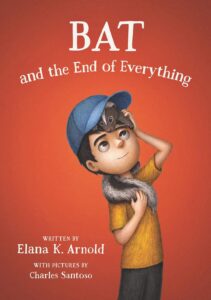
Animal Trivia
Each time I work with a book about animals, I’m amazed at the amount of trivia children know and want to share. This time, leading from a conversation about the lifespan of a rabbit in the book, we’ll play a quick guessing game about the lifespan of various animals. How long does a skunk live? What about a parakeet? Or a tortoise?
Figures of Speech
An aspect of autism that we often read about is the tendency to take things literally. We’ve worked with idioms before, but let’s get specific and work on animal idioms this time. We’ll also explore hyperbole and the way Bat responds to it in the story.
Creative Writing
Since Bat and the End of Everything is such a well-known book, there are several activities and learning resources available online. Using one of them, we will write one chapter that could come after the end of the book. As we write, we will explore not just facts and technique, but also point of view, making a conscious choice of whose voice we use to tell the next part of the story.
Join us!
THIS BATCH IS SOLD OUT!
The next edition of Read, Write, Explore will be held in June 2024. Join my mailing list if you would like to receive email notifications about my programmes. Alternatively, follow me on social media – Facebook, Instagram and Twitter – for regular updates.
Reading and writing go together, and especially for children who enjoy writing but aren’t yet ready for an intensive writing programme, Read, Write, Explore is ideal!

Dhara’s Revolution
March 3, 2024
It’s always a joy to read my books with my book clubs! I’ve read The Prophecy of Rasphora and Dragonflies, Jigsaws and Seashells, in addition to my story in Flipped: Mystery Stories and Sci-Fi Stories.
I can’t wait to read Dhara’s Revolution, a book that has received much love from readers, in addition to having been shortlisted for the AG BLF Prize for Children’s Fiction!
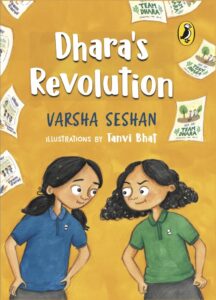
Revolutionary Ideas
If you want to create change, what would you do? Some of you may want to have the right to choose what uniform they wear. Others may want more screentime. What do you want? What is something that you want to do that you aren’t allowed to do? A book discussion is a great way to delve into a story!
Let’s Vote!
Election fever has gripped Dhara’s school, Sarvaloka Public School. Let’s read an excerpt from the book and then cast our votes. What team do you believe in? Online polls are a good way to explore how voting works.
Election Campaign
If you could change five things about your school, what changes would you make? Next, how would you convince your teachers that these changes are required? Brainstorm, and then create an election campaign, persuading the students in your school to vote for you.
Join my book club!
Registrations are closed for this edition of my book club. The next edition will be held in June 2024. Join my mailing list if you would like to receive email notifications about my programmes. Alternatively, follow me on social media – Facebook and Instagram – for regular updates.

The Misadventures of a Diamond Thief
March 2, 2024
When historical fiction and fantasy come together, we’re in for a treat! Rafu is a TTTD–a Time-Travelling, Thieving Djinn. Or at least, that’s what he’s supposed to be. The problem is that he is much more interested in food than gems. When the king of djinns challenges him to steal the Shah-i-Noor, Rafu strikes the perfect deal with his mother. If his mission is a success, it will be his last TTTD assignment and he will be free to open hist restaurant.
Unexpected allies and a healthy dose of luck help Rafu battle nefarious villains and get closer to the diamond. As he plans his escape route, he learns about the Char Minar and we explore the historical city of Haiderabad.
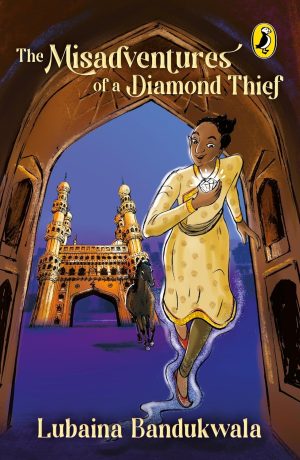
Monuments
The Misadventures of a Diamond Thief is a work of historical fiction that is full of possibility. In the author’s note at the end of the book, Lubaina Bandukwala says that there are many different points of view as to why the Char Minar was built and what it symbolises.
With the Char Minar as our starting point, we will attempt to explore monuments in each city my participants come from. I’m excited to learn a little about lots of places I might never have visited!
Sprites, Djinns, Genies, and More!
What is a djinn? Is it a genie? Through a word search puzzle and a quiz, we’ll explore magical, mythical and mystical creatures from all over the world!
Time-Travelling
Who isn’t fascinated by the idea of time travelling? With books like Fortunately, the Milk, we’ve worked on creating a time machine of our own, imagining places where we would go. We’ll explore time machines in literature and then work on a story outline, including setting, characters, a problem and a solution.
Join us!
THIS BATCH IS SOLD OUT!
The next edition of Read, Write, Explore will be held in June 2024. Join my mailing list if you would like to receive email notifications about my programmes. Alternatively, follow me on social media – Facebook, Instagram and Twitter – for regular updates.
Read, Write, Explore has been running since February 2021 and in the last three years, we’ve read over 40 books together, and at least three books more than once. I’ve had children sign up from all over the world–I’ve seen snow in Himachal, and the floods in Chennai. There’s nothing quite like meeting people from different parts of the globe and sharing stories!

When Jiya Met Urmila
March 1, 2024
I read Shabnam Minwalla’s When Jiya Met Urmila at least two years ago. I can’t believe I didn’t review it on my blog! I think I was probably waiting to use it at my book club, which didn’t happen for several reasons. I think we’d read too many books by the same writer–Lucky Girl, The Shy Supergirl and Nimmi’s Dreadtastic Detective Days. Whatever the reason, I’m so glad I noticed the book on my shelf again when I was choosing my books for the April edition of my book club!
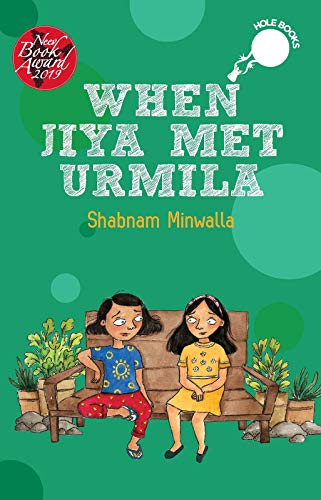
Peek and Seek
Just like Miss Nutty (aka Miss Rati), we’ll play Peek and Seek at the book club. Maybe I won’t ask the children to find a snail or a shoe flower. But I already have a list of things that we’ll try to find before our time runs out.
Super Similes
As I reread When Jiya Met Urmila, I loved all the unexpected ways in which Shabnam Minwalla uses words. It is foolish to count your flowers before they are plucked. Or the similes–teeth gleaming like butchers’ knives, moaning like a Martian with a sore throat, and dazed as a dead fish. What super similes can we come up with? How do we describe things, especially things that disgust or frighten us?
A Friend
Jiya and Urmila are as different as night and day … or maybe they aren’t. Through a guided writing activity, we will write a little bit about an imaginary friend who seems very different from us but turns out to be quite similar.
Join my book club!
Registrations are closed for this edition of my book club. The next edition will be held in June 2024. Join my mailing list if you would like to receive email notifications about my programmes. Alternatively, follow me on social media – Facebook and Instagram – for regular updates.
Do you know that we’ve read over 50 books at my book club for ages seven and eight alone? This is not counting books we’ve read more than once or books I’ve read with older readers!

My Year in Workshops: 2023
January 13, 2024
Writing sessions from the car. Book club sessions from a misal shop on the highway. Guest sessions in my dance class hall. 2023 was a year when I seemed to be juggling rather a lot, especially as my writing programmes were bursting at the seams, plus I started an in-person writers’ club at St. Mary’s School, Pune, once more!
Book Clubs
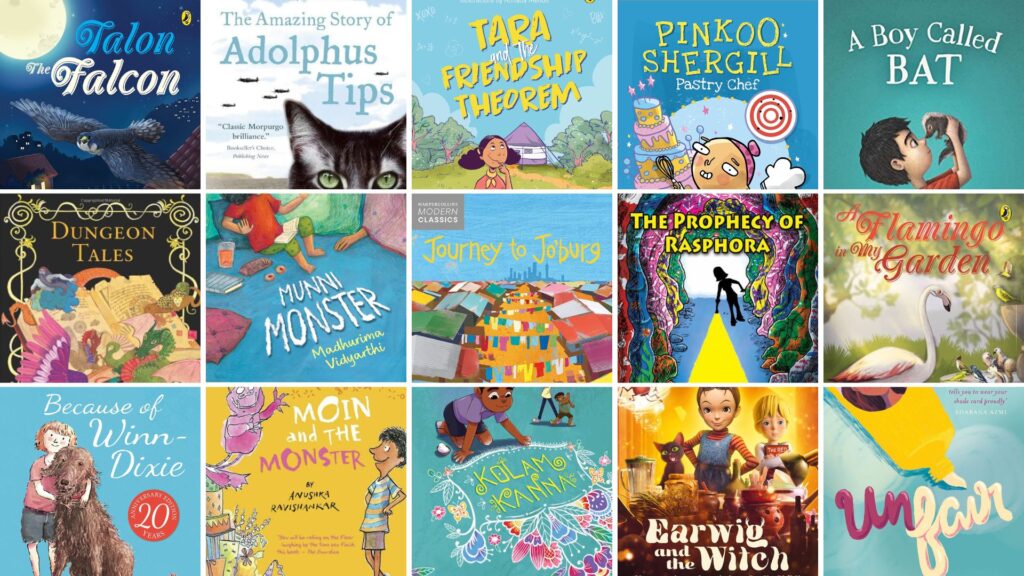
Juggling schedules was often difficult, but my book club for ages nine and ten saw a lot of new participants from different parts of the world. I had book clubbers from all over the country, as usual, but also London and Singapore! In 2023, I also met several of my regular book clubbers in person for the first time. In Bengaluru, especially, it was a joy to meet so many children who’ve read with me.
My book club for ages seven and eight was relatively slow. We did read several books together, but I hope for many more new readers in the year ahead.

Writing Programmes
Unlike my book clubs, my writing programmes have overflowed! In the April to June edition, I had eighteen children sign up across age-groups, forcing me to teach three batches, instead of my usual two. During the October to December edition too, I had fourteen children sign up–three batches again!
I also started teaching at St. Mary’s once more, and that has been more than a little overwhelming because I have over 60 children in each batch! I’m not used to classes that large, but it’s been fun interacting with children in person once more, working with all the forms of writing that I love.
I had six guests visit my writing programme too (virtually, of course), and each one was a treat.
We also launched the next issue of our e-magazine, WORDS, which you can read here. Issue 4 will be out later this month!
My in-person workshops go on as usual too, both teacher training session and author events with children. I’ve conducted writing workshops and training sessions in several cities, and I hope to meet many more children in the year ahead!
Gobi Goes Viral
January 8, 2024
Gobi Goes Viral by Vibha Batra is funny, heart-warming, and altogether believable. We’ve read and loved Kolam Kanna and Pinkoo Shergill at my book club, and I’m happy to introduce yet another book by the same writer to the children I meet. Here’s what we’ll do as we read this story!

Talent Show
How can we read a book about a talent show without having a talent show of our own? Over time, I’ve had children recite poetry, play musical instruments, draw and solve a Rubik’s Cube during our book club. It’s always lovely to see a side of children that I wouldn’t otherwise get to see if we stuck to just reading in class!
Viral
When we read Paati Goes Viral at my book club, we did a fun vocabulary activity, exploring how words come into being. We explored acronyms, verbing, and even made up words of our own. What does “going viral” mean? What other words do children think are of recent origin? Let’s play with words together!
Understanding Difference
There’s an eye-opening conversation between Pari and Gobi in the story; it’s a moment when Pari discovers just how different her life is from Gobi’s. As we read, we will explore differences and similarities. What makes us different from one another? What makes us similar? What differences do we notice easily, and what differences do we ignore?
Join my book club!
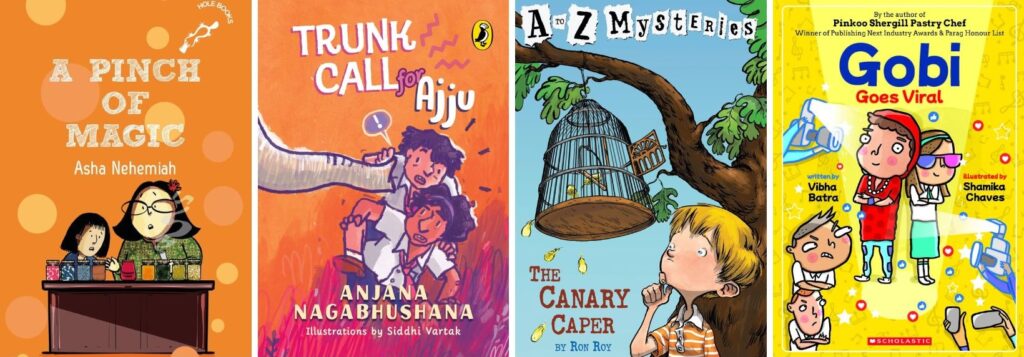
The Very Glum Life of Tootoolu Toop
January 7, 2024
We’ve read The Very Glum Life of Tootoolu Toop before and I can’t wait to read it again!
I know it’s longer than the books I usually choose, plus every batch of children is different, with mixed reading levels. Once more, I find myself asking, will it be too ambitious to read it in three classes with a bunch of children?
The answer is still the same – possibly.
Yet, there are so many things that draw me to the story that I am willing to take the chance again! It worked once; I know that for sure. Also, considering the number of children I meet who love fantasy, I think this will be a wonderful way to end the reading programme.

Magic
Stories about magic are fun to read and fun to write. What makes a magical world come alive? What magical words can we create?
Even when I reviewed Tootoolu Toop, I mentioned how I love the influence of Indian languages on the magical words in the book. Moving away from Latin and Greek to magical words of our own is going to be fun!
Creating a Witch
When we say the word ‘witch’, what do we think of? Let’s see if we can create an unusual witch–not the conventional black-cloaked creature, but not one like Hermione Granger either! We’ll try to be original and create something new!
Notes and Letters
One of the most delightful things about The Very Glum Life of Tootoolu Toop is all the notes she writes everywhere. The book opens with a letter and then, right through the book, we discover notes of all kinds. Writing notes is quick and easy, and it’s a lovely way to begin the process of writing. As the children read, I’d love for them to write notes to themselves and put them into the books. The notes could be as simple as ‘I love this’ and ‘This is funny’.
Join a book club!
REGISTRATIONS ARE NOW CLOSED FOR THIS EDITION OF READ, WRITE, EXPLORE.
New batches begin every alternate month. If you would like to receive email notifications about my programmes, please fill this form. Alternatively, follow me on social media – Facebook, Instagram and Twitter – for regular updates.

The Canary Caper
January 6, 2024
It’s been 25 years since The Canary Caper was published, and it’s still such a joy to read! We read the first of the A to Z Mysteries, The Absent Author, in April 2021. When I met the some of the same children again in June, several of them were devouring the rest of the series. I’m now looking forward to introducing the series to a new set of enthusiastic 7- and 8-year-olds!
As I read The Canary Caper, I was struck by many little details. On the one hand, I was upset about the animals in the circus. Of course, this is something we will discuss at my book club–animal rights. On the other hand, I was delighted that Ruth Rose pooh-poohs the idea of becoming a car salesman because she wants to be President! And then, she rubs it in by adding that it’s saleswoman, not salesman. Reading the book with my book club is going to be such a delight!
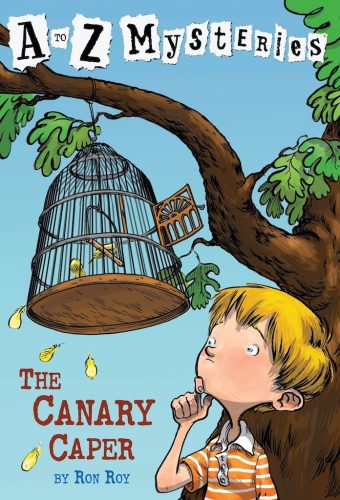
Alliteration
An activity always accompanies the introduction of the word ‘alliteration’ to my book club! The A to Z Mysteries all have alliterative titles. How many others can we think of? If we had to create an alliterative book title with our own names, how would we do it? And finally, can we take alliteration further to create a tongue twister?
Puzzles
A detective story is really a complex puzzle. The clues are in front of us; we just need to put them together to solve the mystery. This is the perfect way to introduce other puzzles – a code, a word search puzzle, and so much more!
Writing a Simple Detective Story
A detective story is arguably the most satisfying kind of story to read. Using a story worksheet, we’ll try to write a simple detective story of our own.
Join my book club!

An Alien in the Jam Factory
January 5, 2024
An Alien in the Jam Factory is such a fun read! A book that celebrates ideas is the best kind of book to read with children. The very first page is filled with doodles and ideas–like a jam slice, which is like a cheese slice that you can put straight into a sandwich. What else can we do as we read the book?

Food Ideas
Create your own wacky jam recipe! Scooter, the protagonist of An Alien in the Jam Factory, creates wasp-repelling jam, Brussels sprout jam, cherry bomb jam and more. What can we make? What kind of jam do the children at my book club think will be fun and delicious? Waiting to find out!
Alien
Creative writing is an integral part of my book club for ages nine and ten, so let’s imagine aliens of our own. If an alien landed in your balcony, what would you do? What problems would you face and how would you solve them? Would you be willing to go visit their planet with them?
Persuasive Writing
We worked with persuasive writing during my creative writing programme last year; it’s always fun. Scooter wants to convince his mother to let him keep a pet–this is a common argument children have with parents! What if you wanted a pet? How would you convince your parents to let you get one? What promises would you make?
Join a book club!
REGISTRATIONS ARE NOW CLOSED FOR THIS EDITION OF READ, WRITE, EXPLORE.
New batches begin every alternate month. If you would like to receive email notifications about my programmes, please fill this form. Alternatively, follow me on social media – Facebook, Instagram and Twitter – for regular updates.

Trunk Call for Ajju
January 4, 2024
Even when I read and reviewed Trunk Call for Ajju in June 2023, I knew it would be one of my book club reads soon enough. A book about children and animals always holds a special place in my heart, and elephants are extra special. Here’s what we’ll do as we read the book.
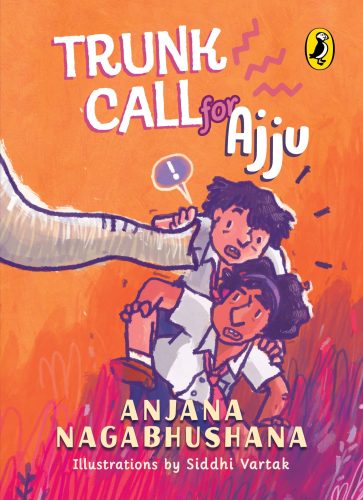
Money-Making Ideas
Children’s business ideas are fascinating! If you had to raise money for a cause you believed in, what would you do? How do you think you could make money?
Just like Making Millions and Amelia Bedelia Means Business, Trunk Call for Ajju is the perfect book to explore entrepreneurship!
Talent Show
Ajju and his best friend Karthik take part in a talent competition that they’re determined to win. What would you do to win a talent show? In the past, at my book clubs, we’ve had all kinds of performances – piano, solving Rubik’s cubes, the flute, recorder … It’s time to step out of our books and find out about one another’s talents again!
Animals
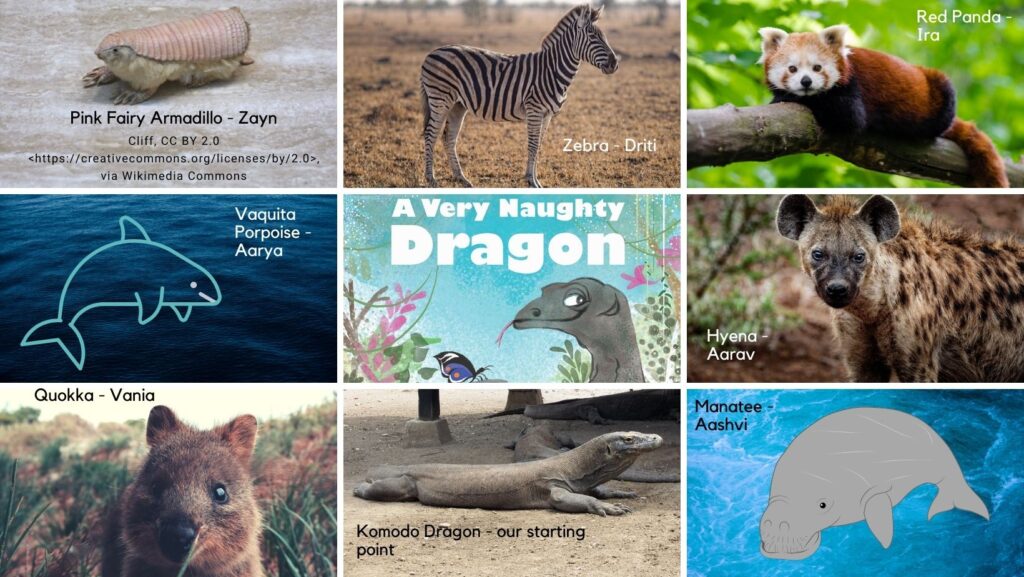
When we read A Very Naughty Dragon, I asked each child to tell me a little about an animal they love. I’ve done a similar activity with the children at my book club for older readers too, and I’ve learned about all kinds of creatures. Since this book is about an elephant in Zimbabwe, we’ll focus on African animals. What animals do we find in Africa? And in which country are these animals found? Let’s explore!
Join my book club!

When the World Went Dark
January 3, 2024
I read When the World Went Dark one year after our first lockdown. And I wondered about including it at my book club. Grief is deeply personal. No one feels the way you feel. It almost feels unfair when people do.
Even so, we do want to talk about our grief. Additionally, with any book, we take away what we want to take away from it. The lockdown, online classes and the fear of the virus are so real that I want children to read this, a book about their lived reality, one that acknowledges that not all adventures happen outdoors when we are free to run about and play.
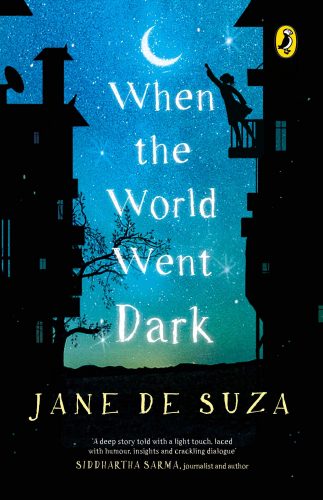
Book Discussion
For When the World Went Dark, the discussion will lead the way. Children will want to talk about lockdown, loss, online school and more; I am sure of it. When the cook of one of the children at my book club caught covid, the child was so horrified he could not stop talking about it. And in all these months, I’ve met just ONE child who likes online school more than physical school! With a book like this, the conversation will lead itself.
Detective Stories
Swara, who is almost nine years old, shares a special relationship with her Pitter Paati. They find clues and solve mysteries together, so much so that Pitter Paati calls her Little Miss Marple. Unfamiliar with Agatha Christie’s detective, Swara checks that PP does not mean Little Miss Muffet, and eventually settles with Little Miss Marble.
What famous detectives do we know? From Sherlock Holmes to Poirot, the Secret Seven to the A to Z Mysteries, let’s discover what detective stories have in common before we write our own!
Puzzles and Clues
Swara wants her Pitter Paati to send her a clue, any clue that will help her find her missing grandmother. Because she cannot believe that Paati is gone. The girl hunts for clues everywhere – in the lights flashing in the picture hanging on the wall, in socks, in everything.
Solving puzzles based on clues is immensely satisfying! I love logic and logical puzzles myself, so I provide participants with a set of clues based on which they have to solve small mysteries of their own!
Join a book club!
REGISTRATIONS ARE NOW CLOSED FOR THIS EDITION OF READ, WRITE, EXPLORE.
New batches begin every alternate month. If you would like to receive email notifications about my programmes, please fill this form. Alternatively, follow me on social media – Facebook, Instagram and Twitter – for regular updates.

A Pinch of Magic
January 2, 2024
We’ve read Trouble with Magic at my book club; it’s time to read the sequel! A Pinch of Magic is a fun read, full of surprises. I read and reviewed the book some time ago, and I’m excited to be introducing it to my book clubbers. Here’s what we’ll do with it.

Innovative Address
One of the first things that made me chuckle as I read A Pinch of Magic was the Maha Guru’s highly accurate address. And this leads us to our first activity. How would you write your address if you did it in a similar fashion?
I love linking screen time with the world around us. Looking around them, I want the children to tell me: what tree is closest to them? What is the shape of tree near the gate? How tall is the tree at the end of the lane? Together, we’ll create an innovative address for each one of us!
Label Design
We thoroughly enjoyed creating different kinds of chocolate when we read The Chocolate Touch. We took it step by step, choosing our ingredients, creating a recipe, naming the product and pricing it.
With A Pinch of Magic, I want the children to take a name from the book – Simply-Dab Cavity Repair Gel or Baby-Soothing Gum Jelly – and design a label for it. I know the children will surprise me with their creativity!
Measurements
A book that is all about a broken pinching spoon is the perfect introduction to the idea of measuring tiny things. Drawing from a journal-writing activity I did at my writing programme recently, we’ll write a few details about ourselves, measuring as we go along. How long is your little fingernail? Do you have any scars? Measure them! Use a string and measure your knee. I’m waiting to do this with the children!
Join our book club!

The Diary as Story
December 6, 2023

In just a few weeks, yet another writing programme will come to an end! Yesterday was the third and last guest session of the season–a creative writing workshop with children’s book author Sowmya Rajendran.
I love it when guests reinforce something I’ve been talking about for a while. During yesterday’s session, it was ‘write what you know’. Of course, I do give children the opposite advice too–write what you don’t know–but the point, for me, is to bring stories into familiar contexts.
When Sowmya told us about how her book Mayil Will Not Be Quiet was born, she stressed that she and her co-author Niveditha Subramaniam wanted to write a book about being a child in India. What is it like to go to an Indian school? What sort of conversations do we have at home? This idea is well worth repeating, especially as most children continue to write stories about Michael and Felicity, who live in Massachusetts (which, of course, many cannot spell)!
Sowmya spoke about the importance of an authentic voice because finally, it’s the voice that will keep the reader invested in the story. Step by step, she led us through the process of making the diarist’s voice feel real. For one, we must have a clear idea of the character. For another, we need to look at the character’s social circle because naturally, a diary would be full of stories about people around this character.
From character and form to little quirks and doodles, Sowmya helped us make our epistolary story believable. It’s with conflict that a story really becomes a story, and that’s what we explored through yet another writing activity.
Just like that, we’ve had three rewarding guest sessions, creative thinking, and a lot of writing. The last writing programmes of the year with fourteen young writers are racing to an end!

